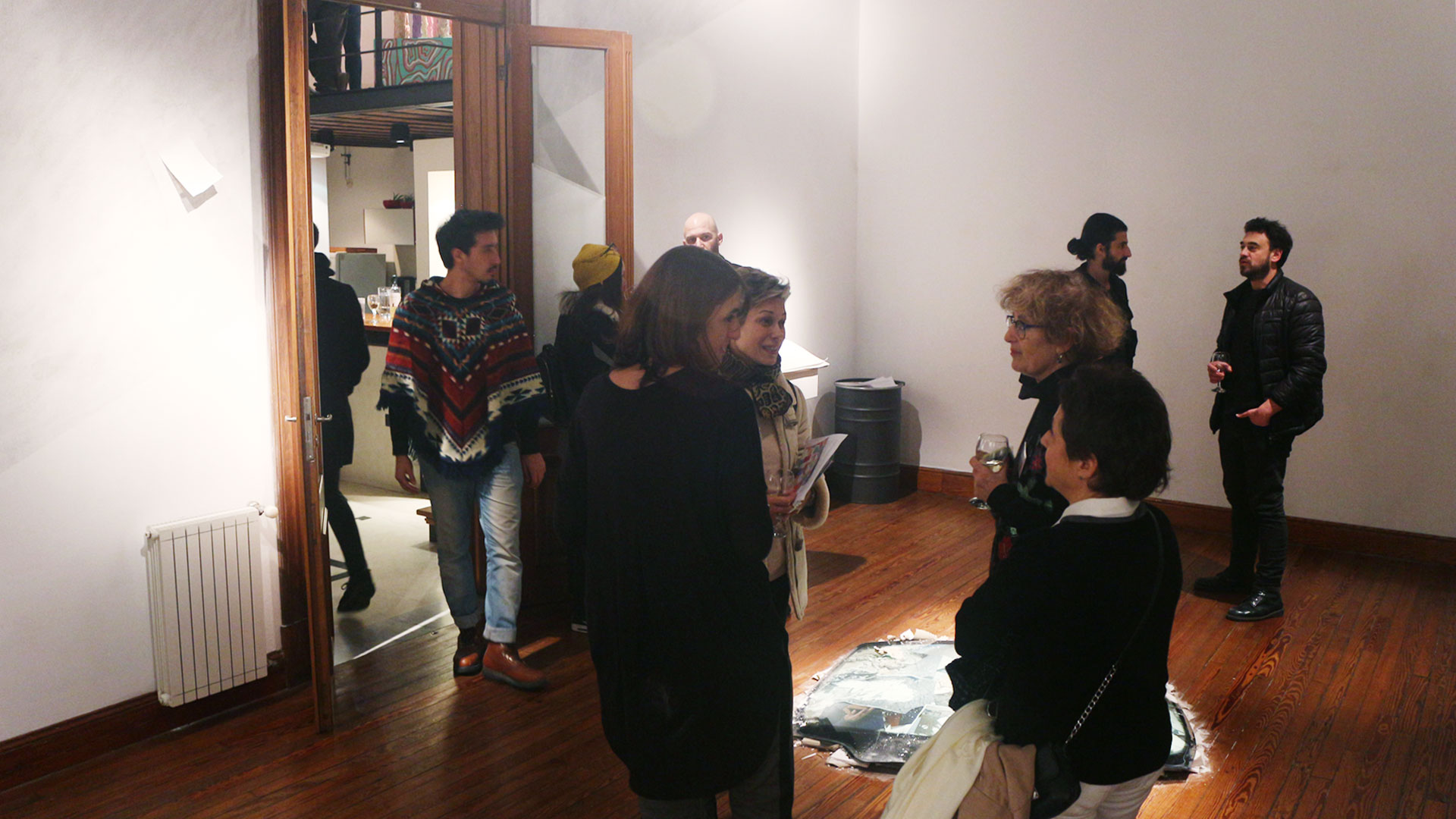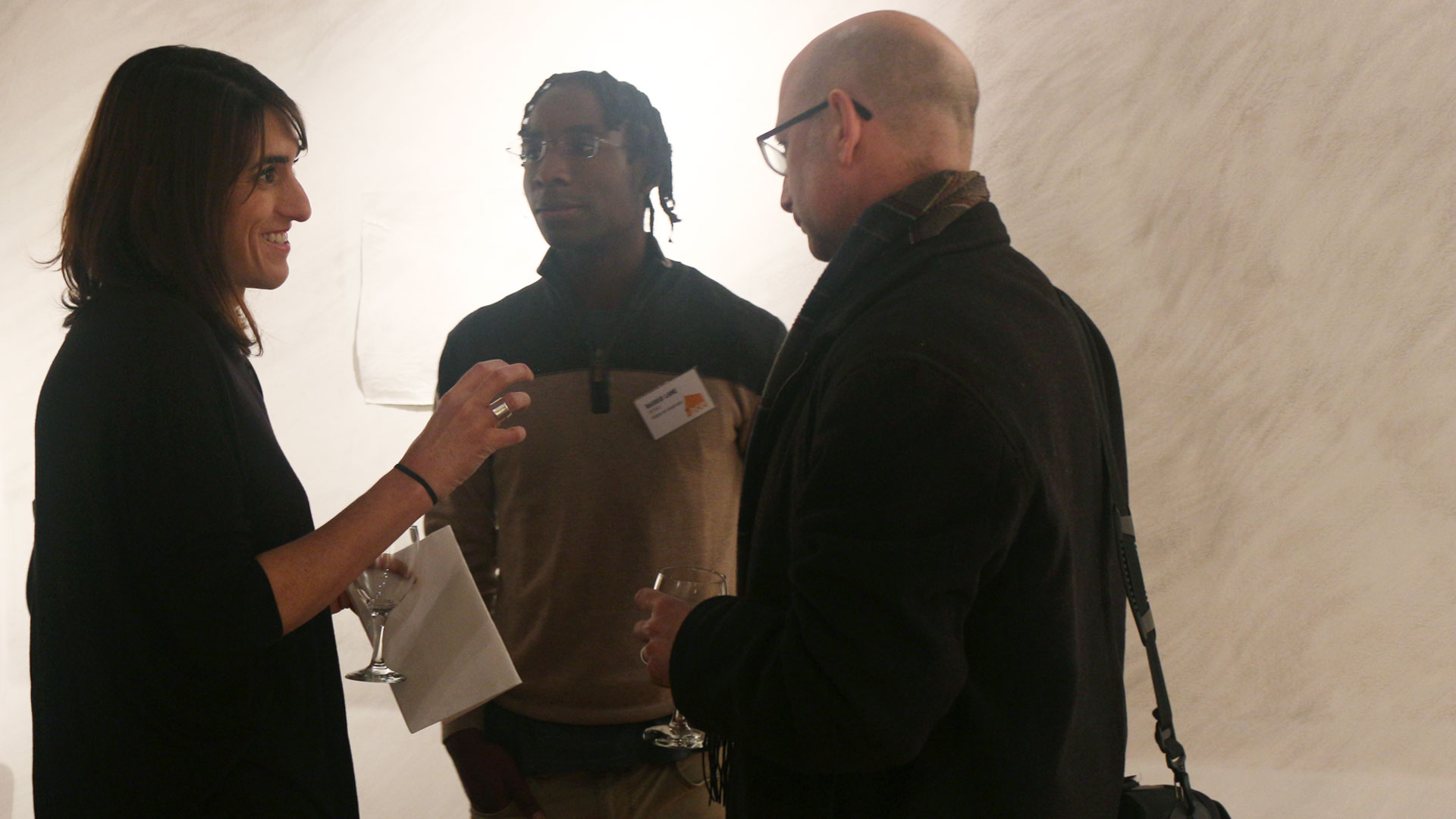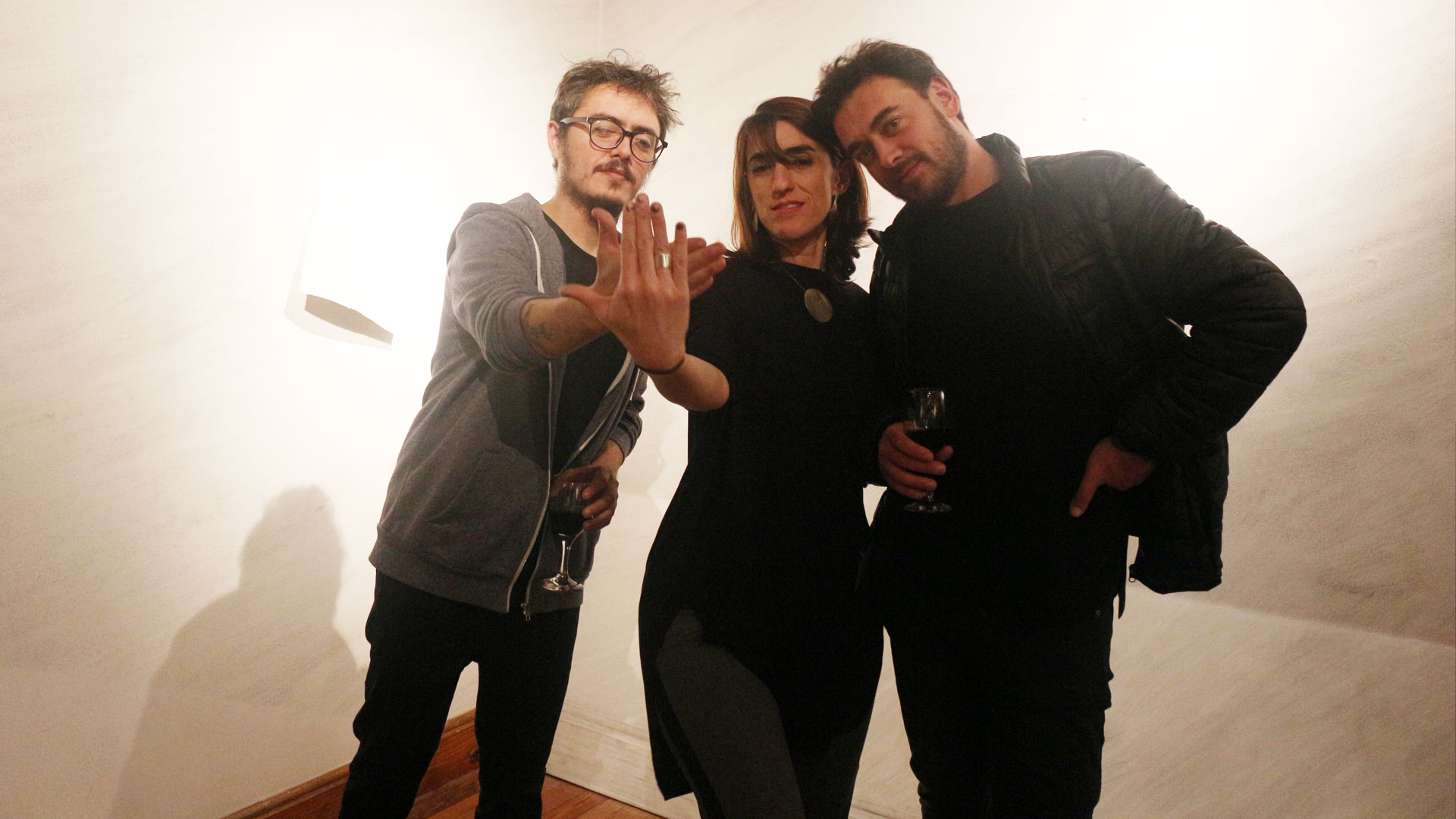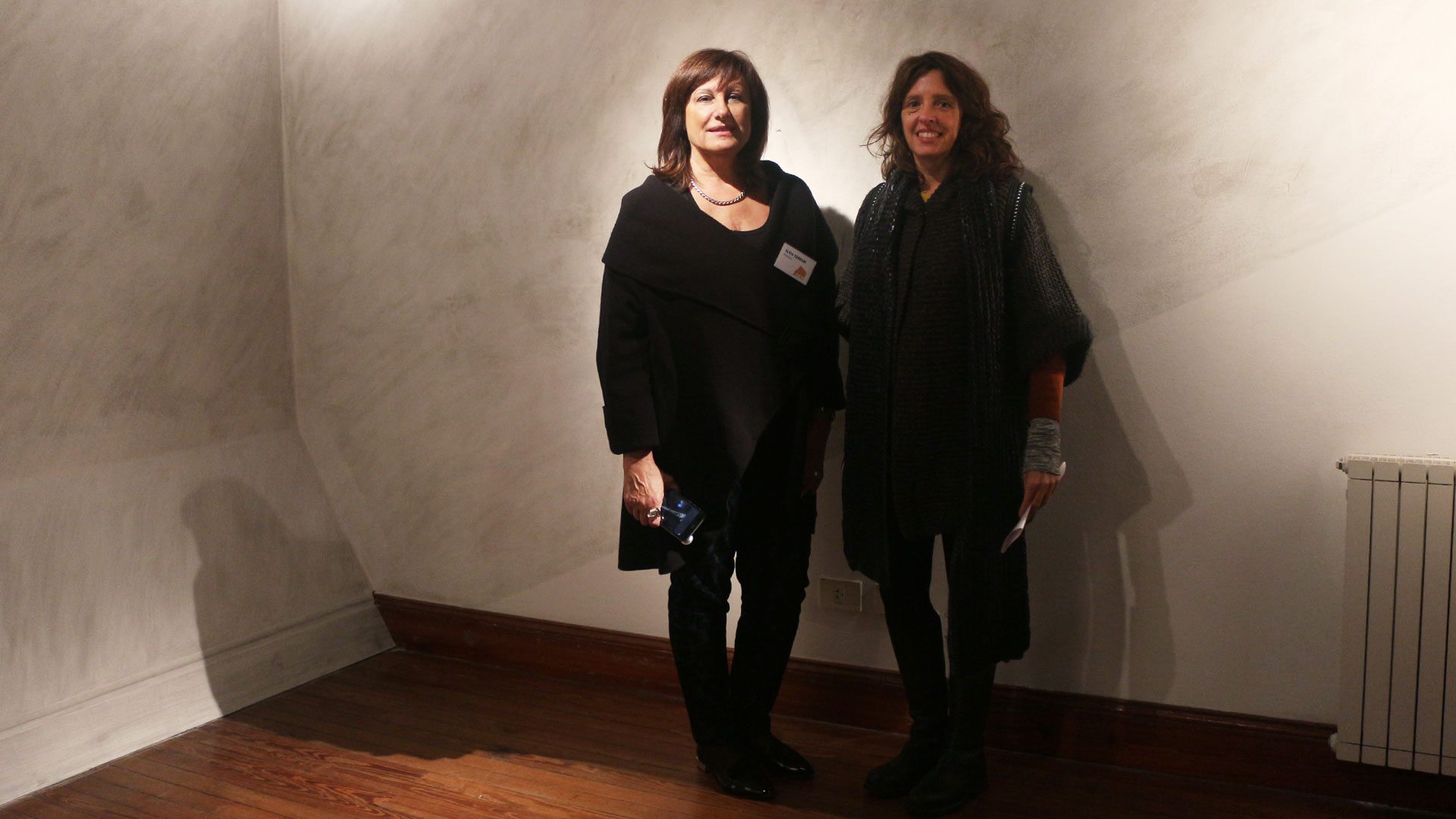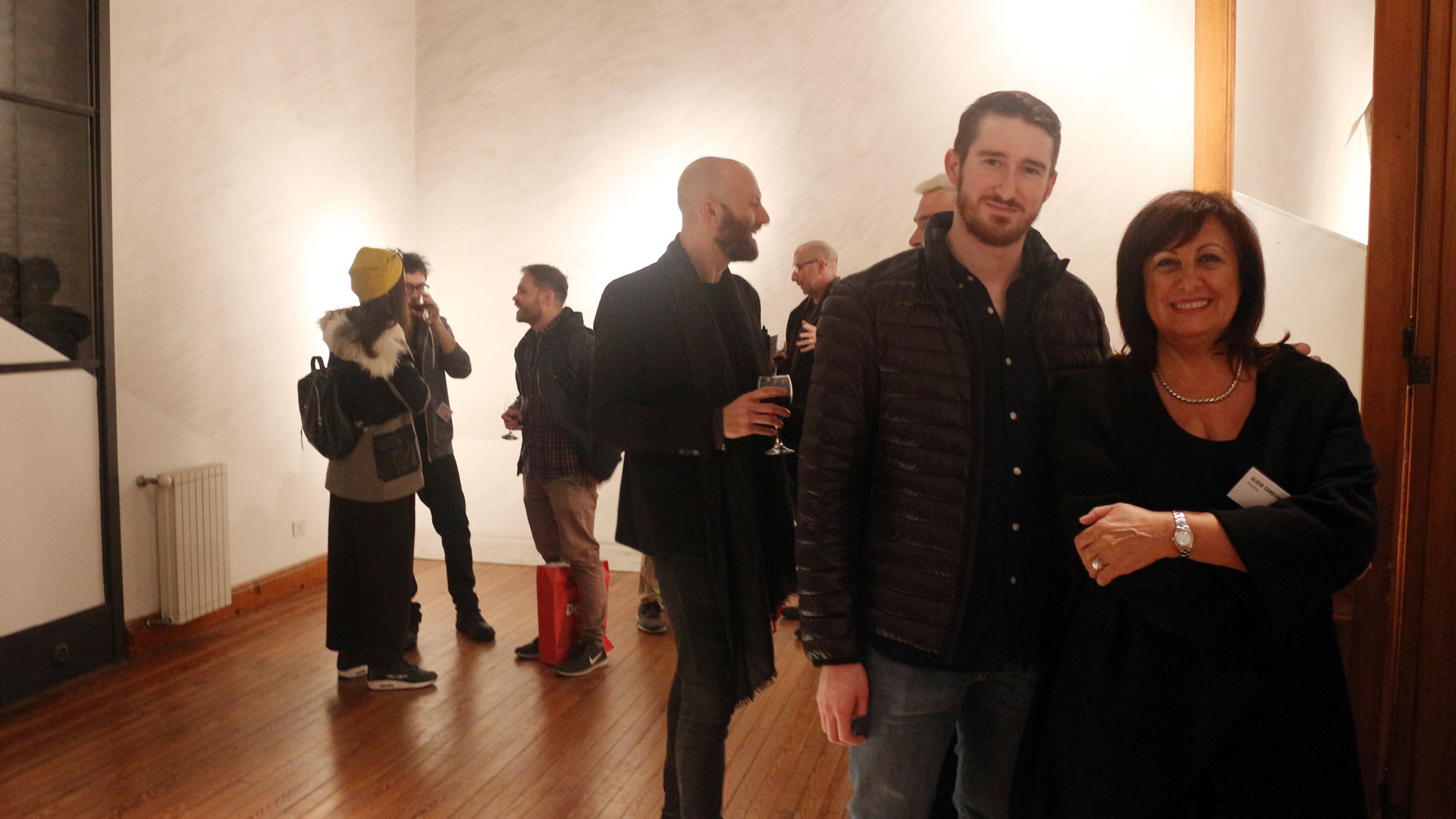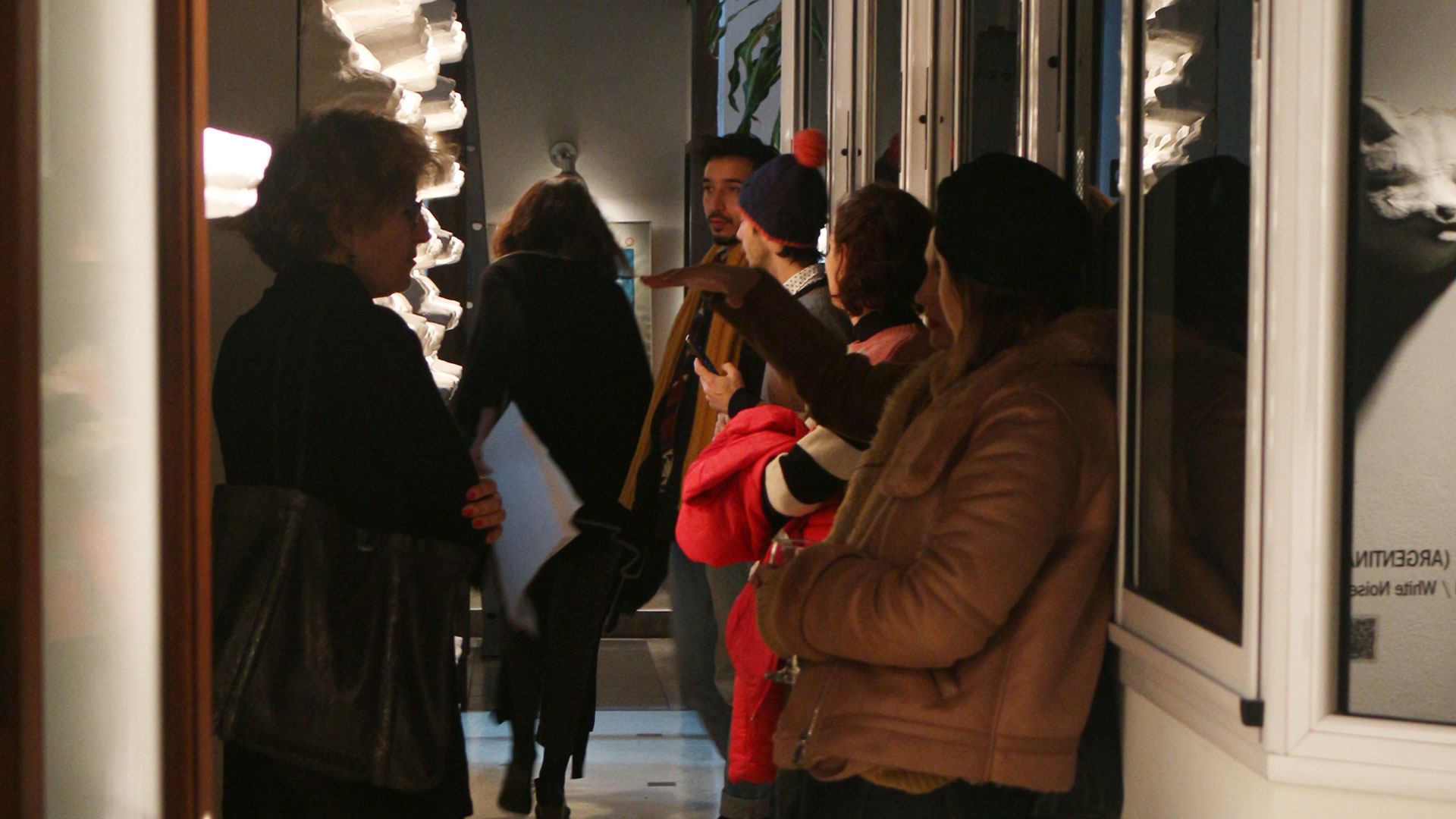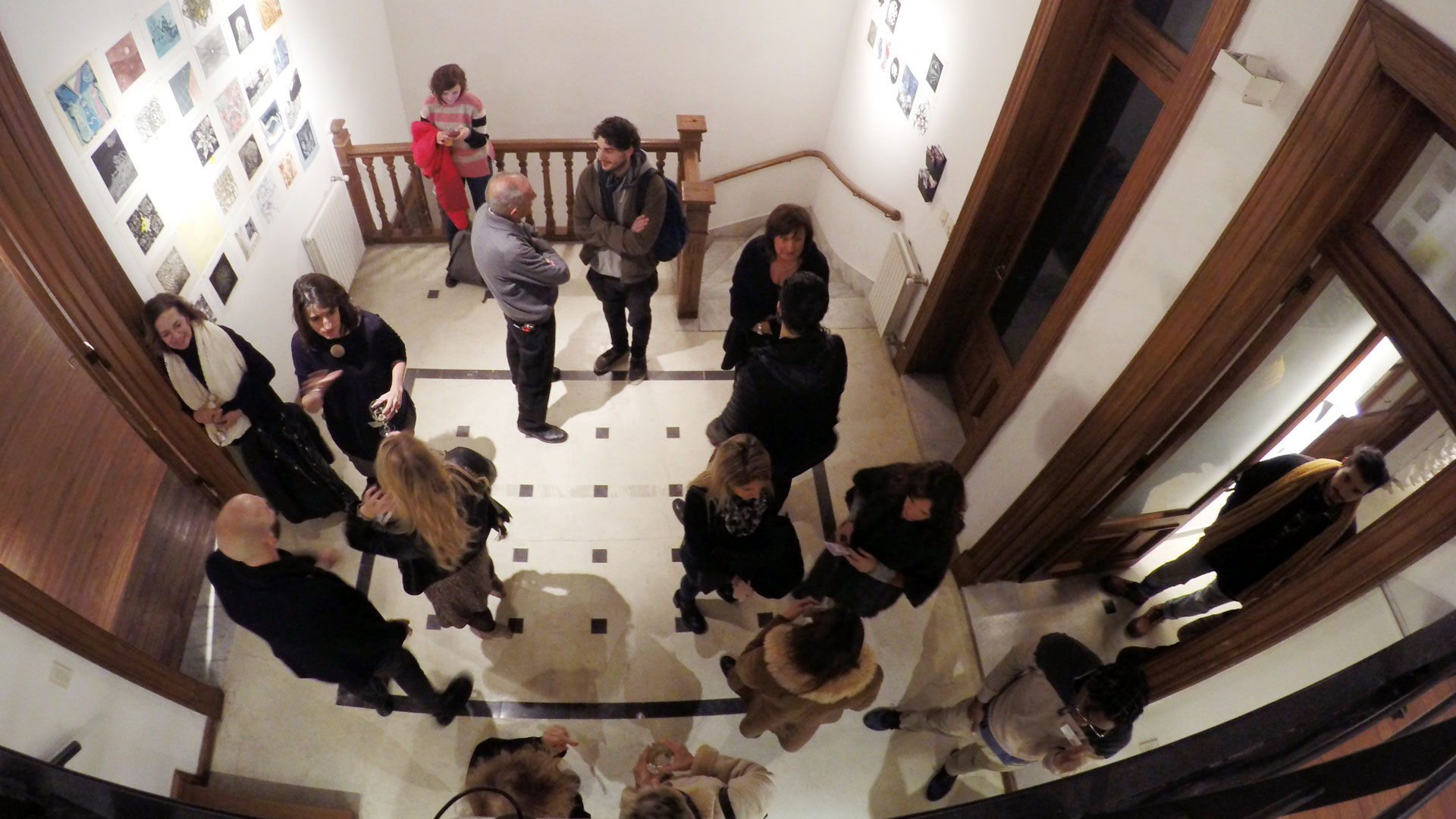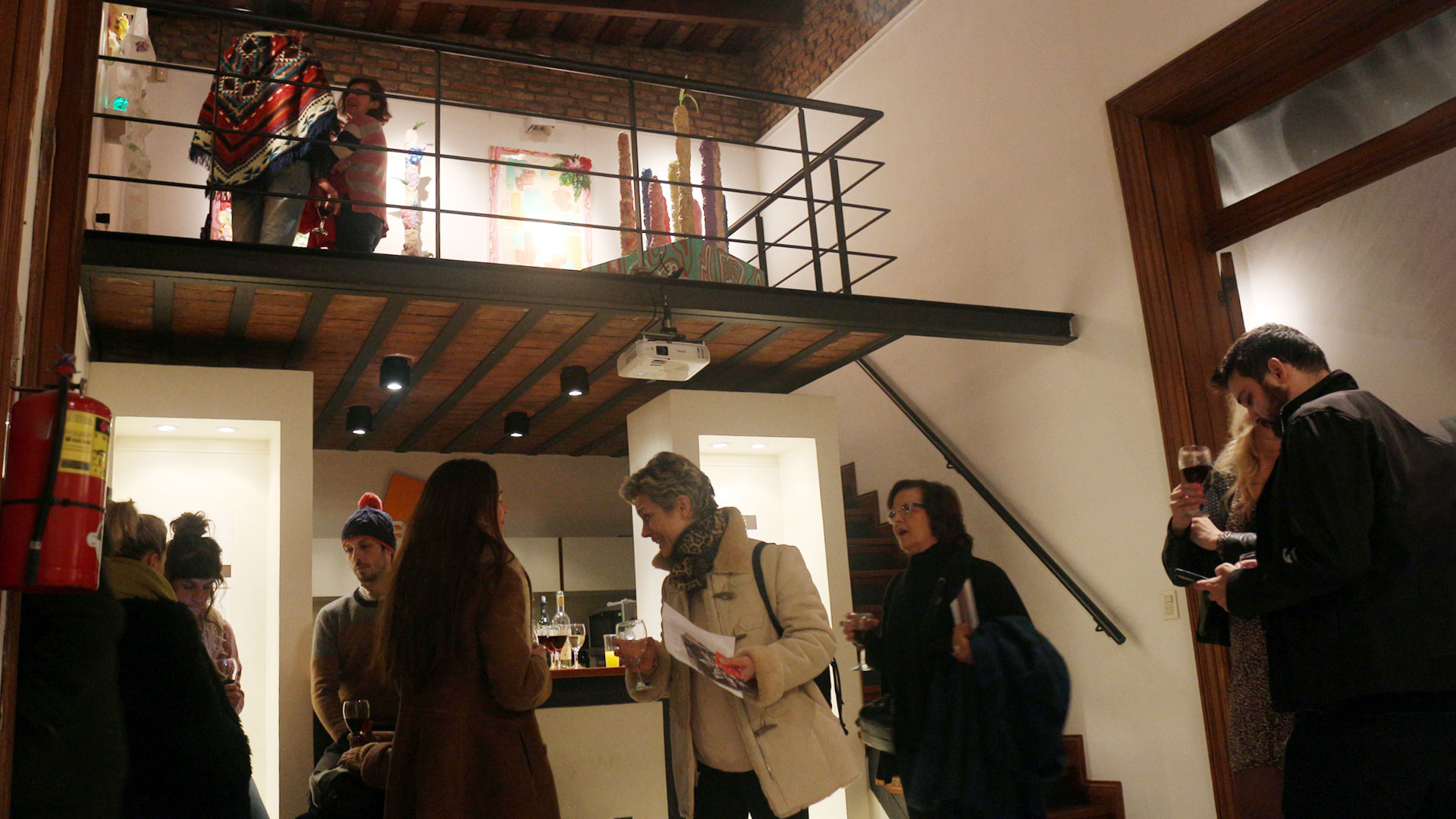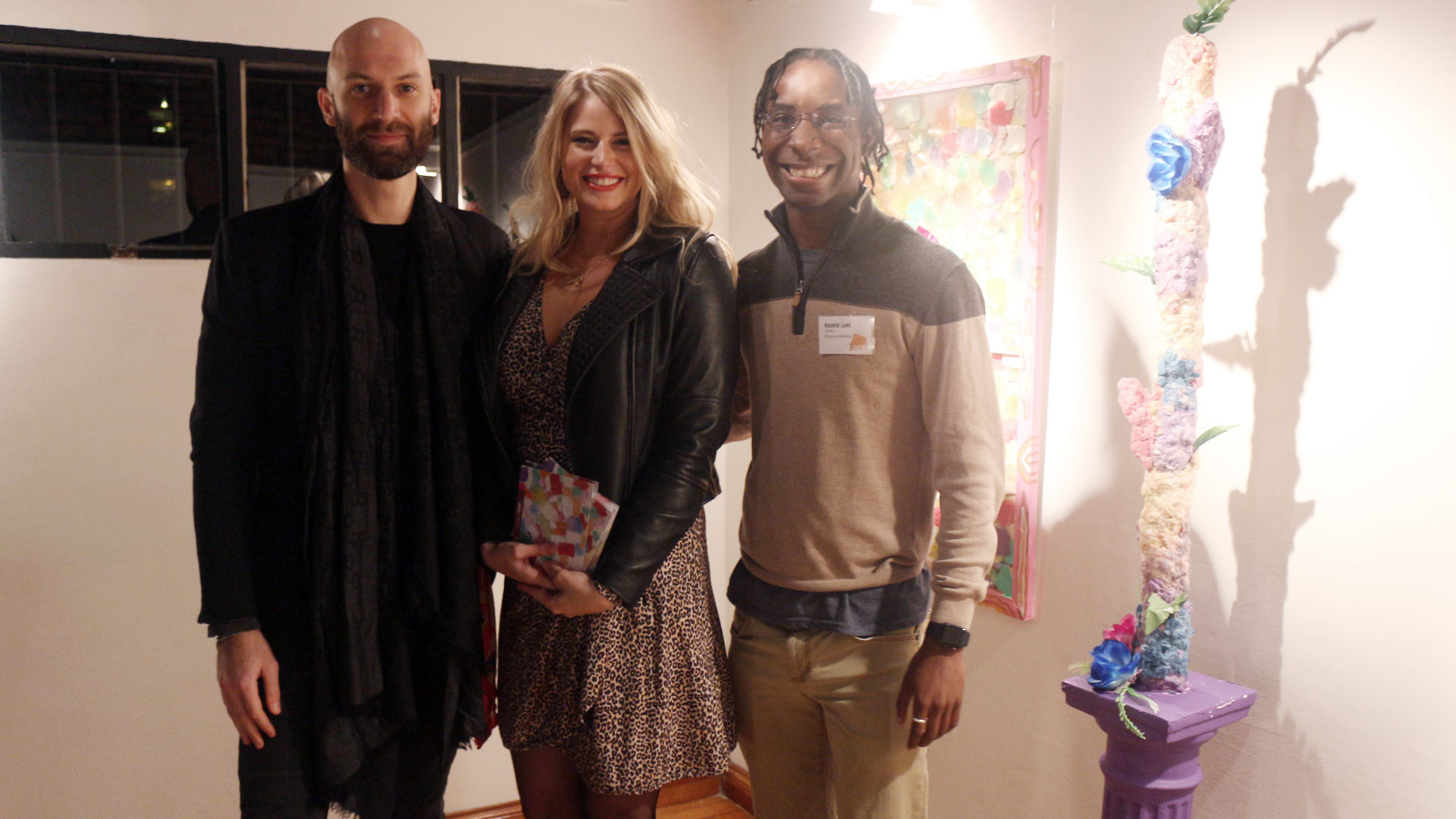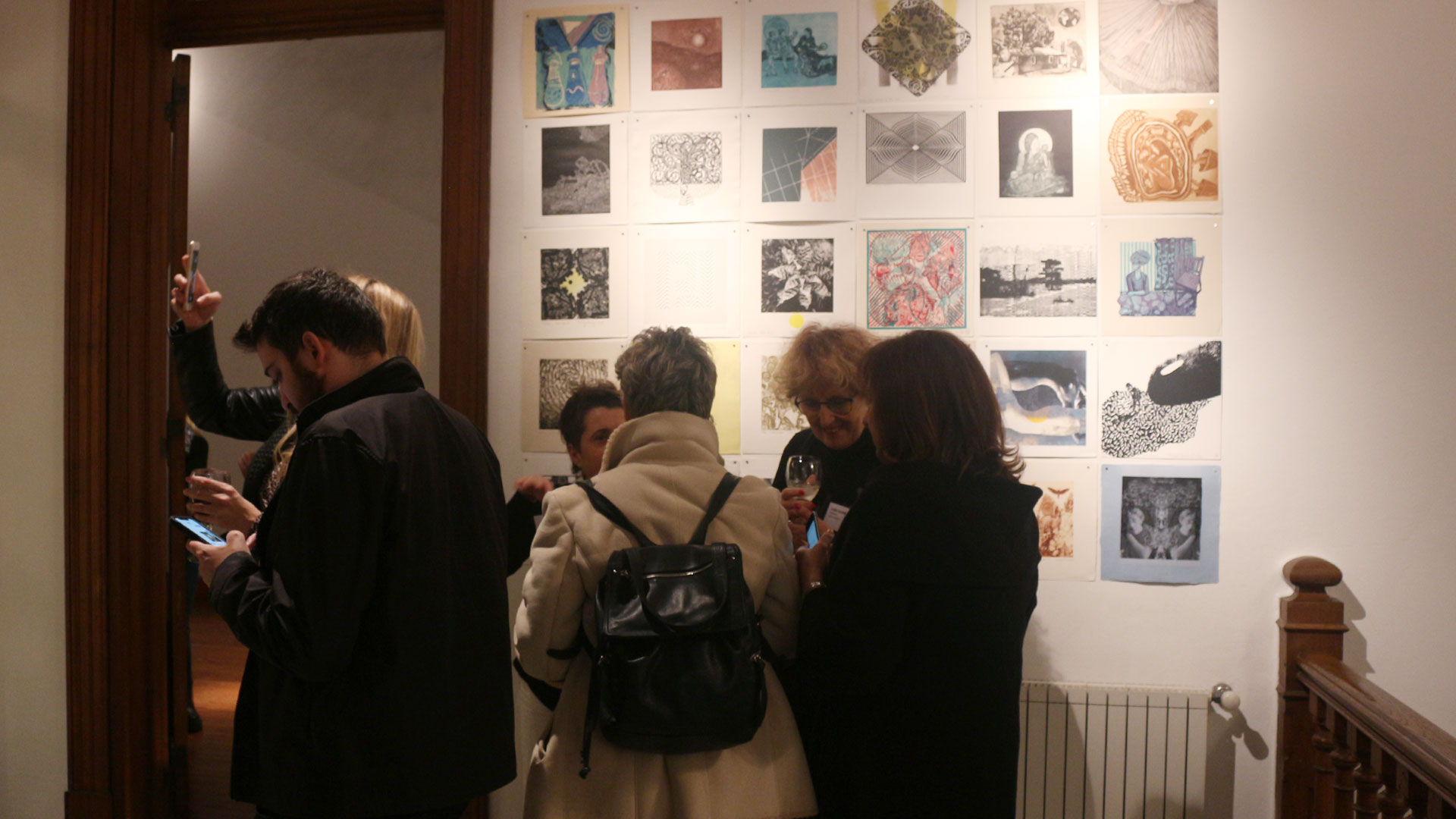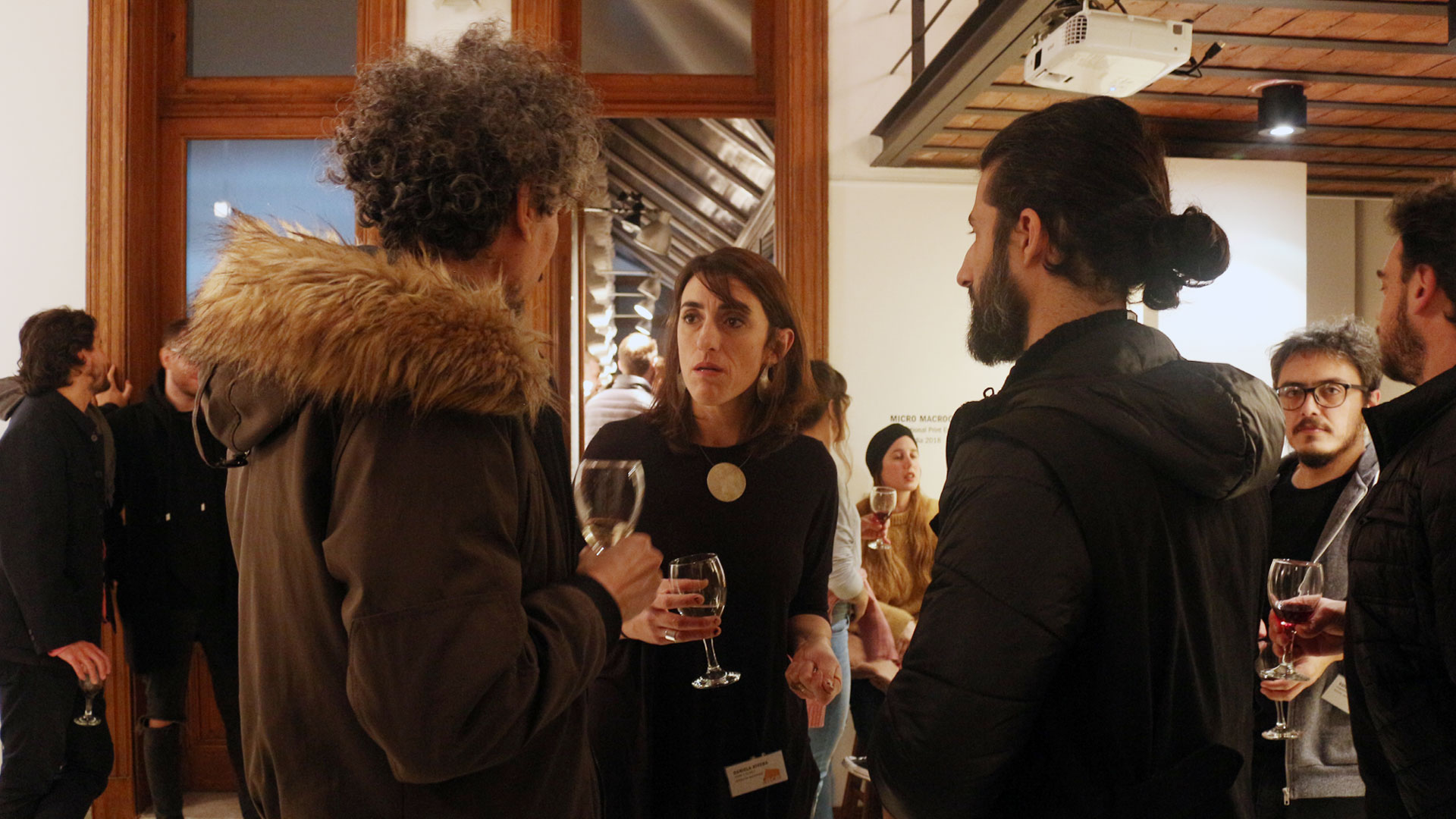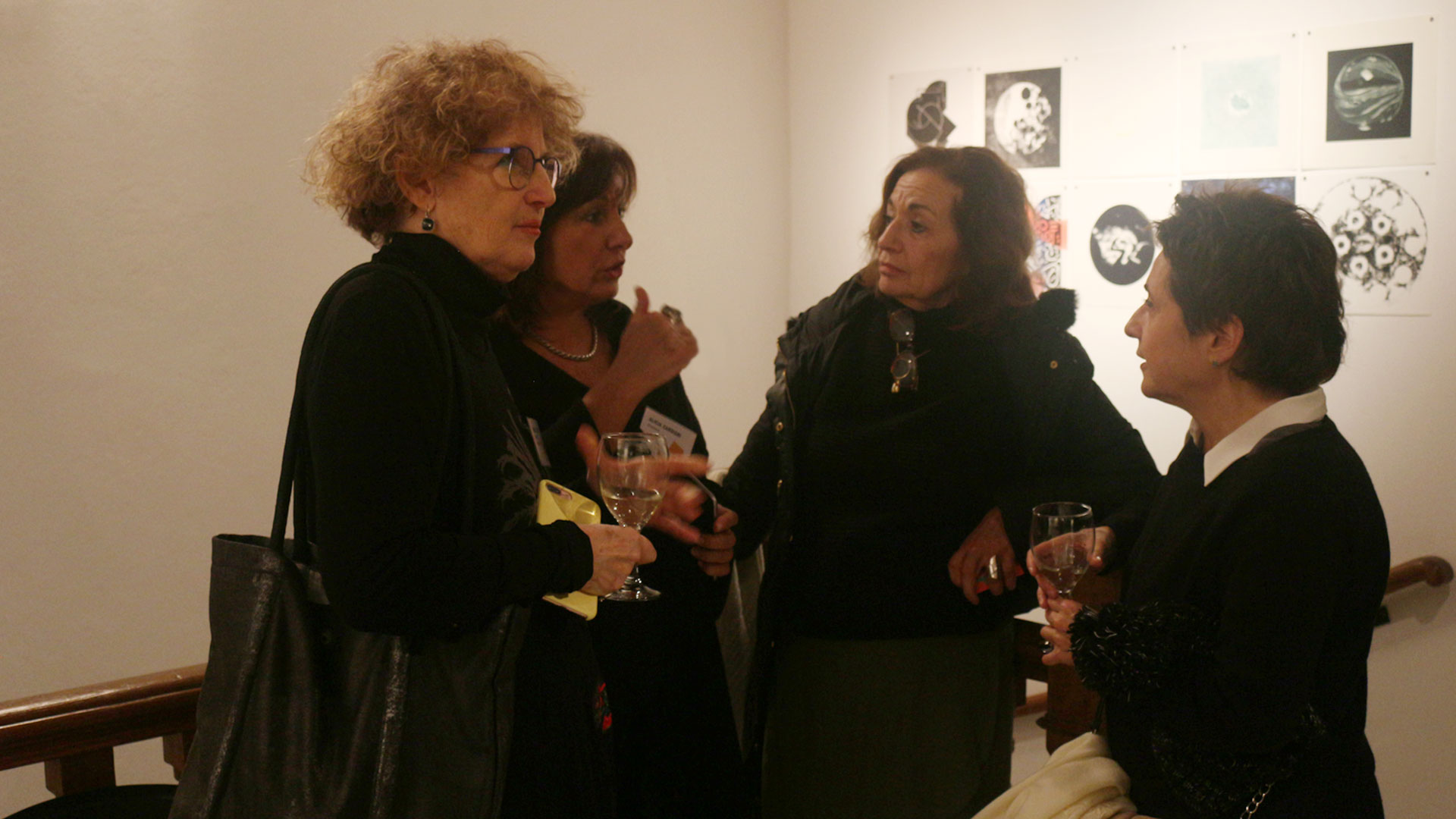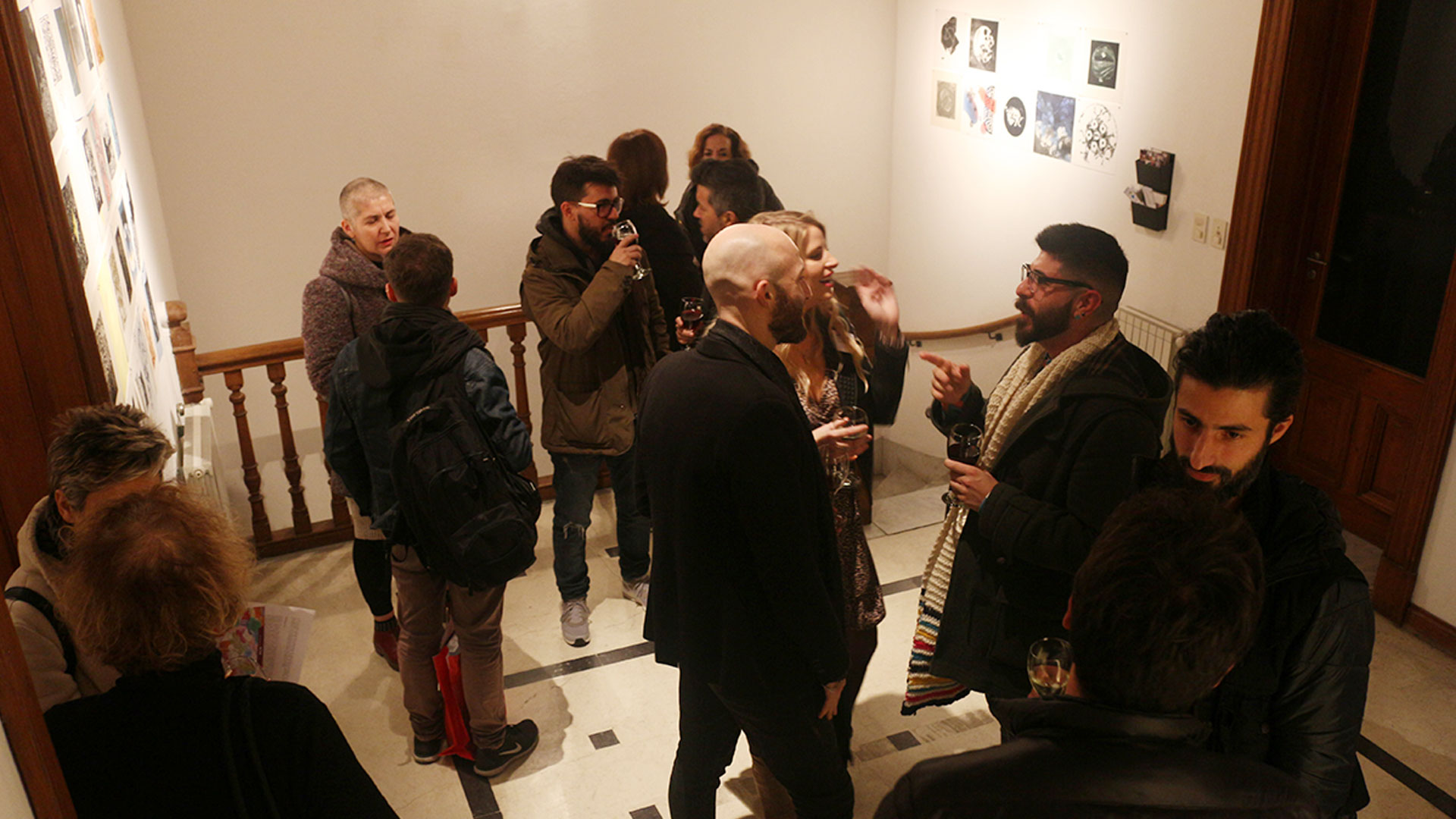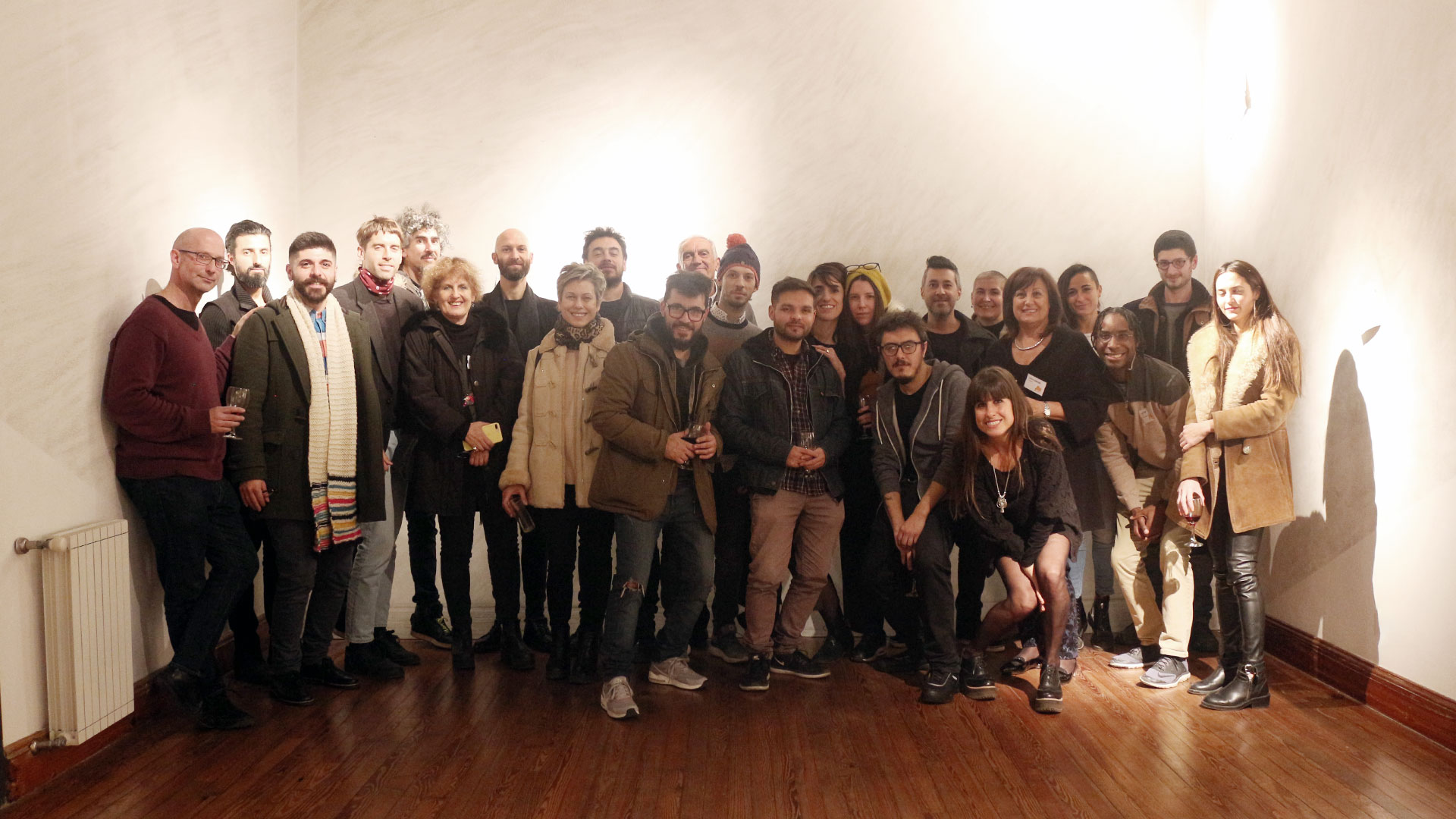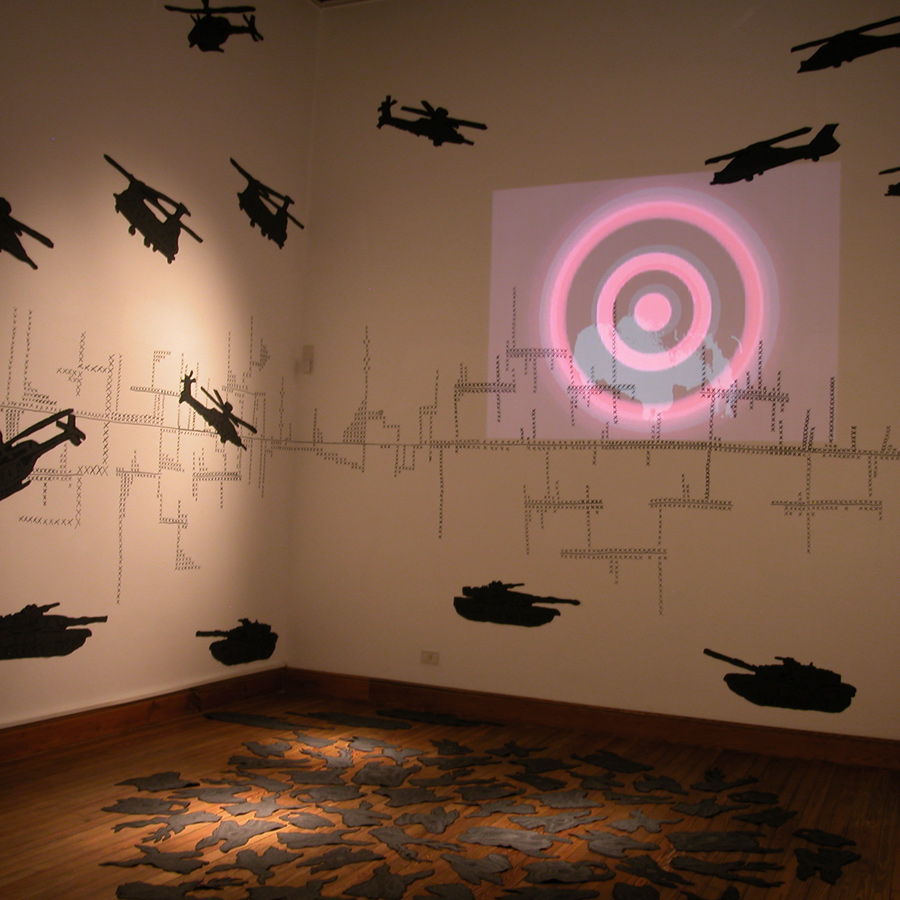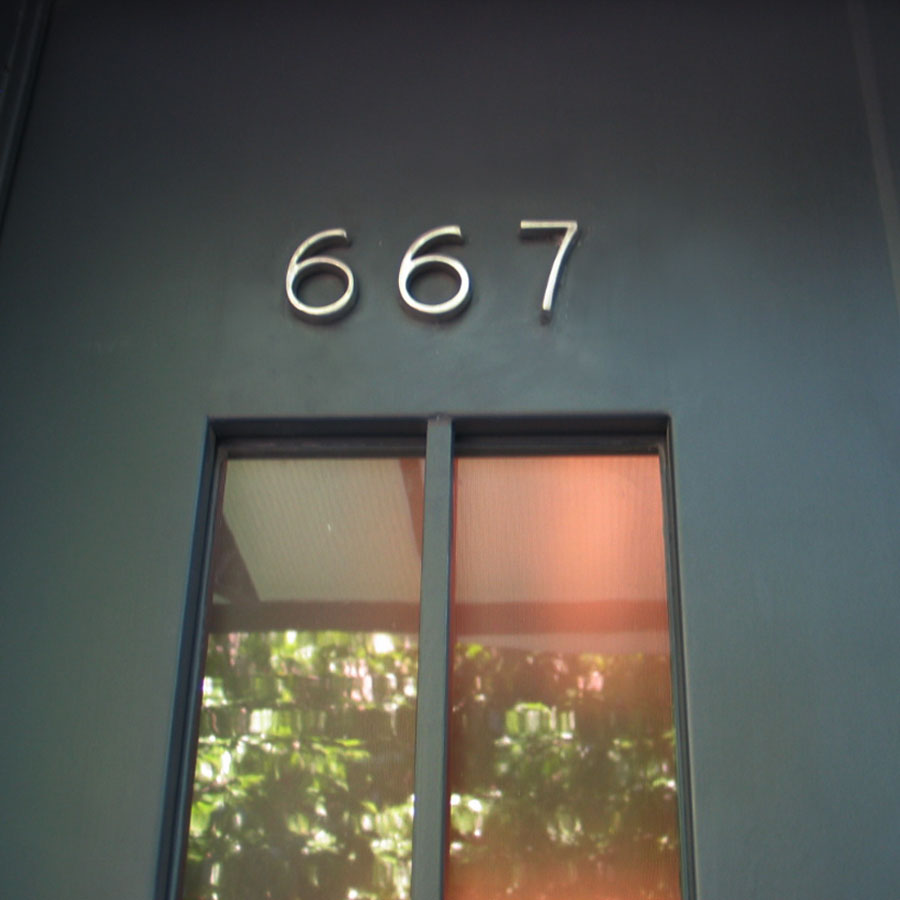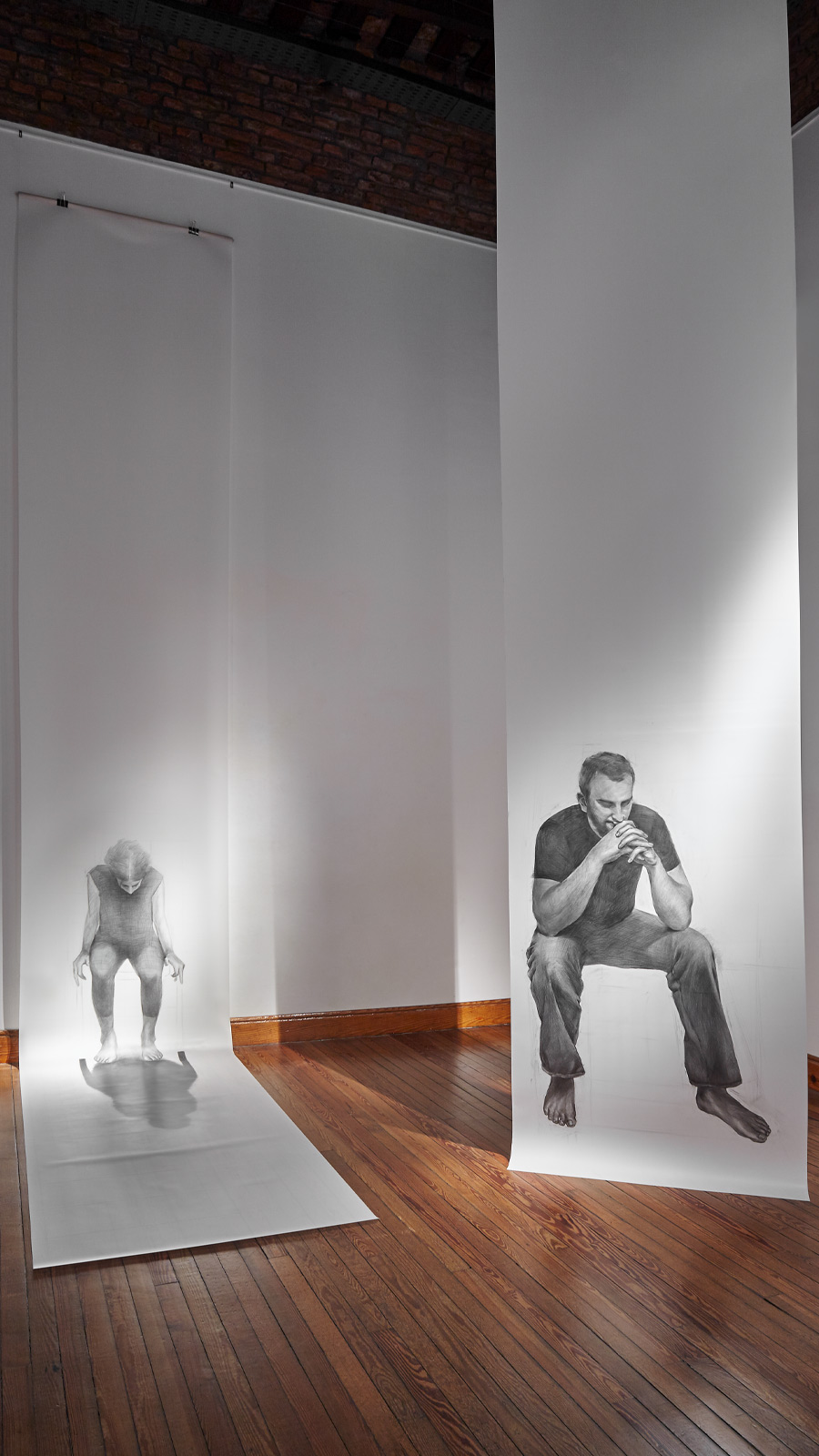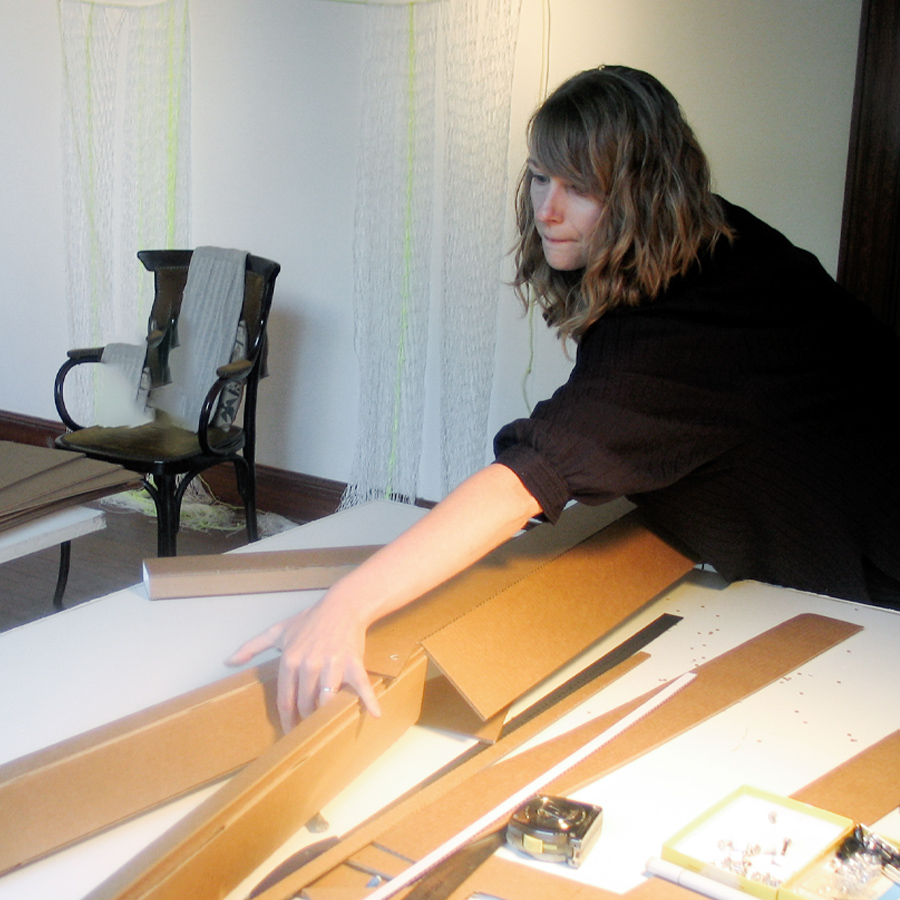Artists
Chile
Daniela Rivera
In Search of the Andes
12.06.19 05.07.19
Daniela Rivera is a Chilean visual artist making work that attempts to understand the object quality of images. Her paintings are usually site specific and react to the spaces of exhibition. By recreating utilitarian uses of painting, which alter representational and perceptual planes, Rivera makes the painting perform as the space and ask the body to assume the role of the figure of the painting. The artist is interested in working at the intersection of disciplines and opposing schools of thought while her work tangos with the process of baroque painting techniques and the presentational strategies and formal undertones of minimalist art and some of the conceptual elements of Arte Povera, a fundamental contradiction but a world of possibilities for staging.
WORKING BACKGROUND
Several years ago, my art practice and work shifted from direct representations of the human body to constructions of spaces which the viewer’s body inhabits. This shift was an attempt to establish a closer relationship with the viewers of my work and allow them to physically experience a sense of agency and responsibility when coming in contact with the work.
Landscape as an object and an embodiment of narratives and history grew as a subject matter of research. On the one hand, the notion of landscape is an extension of the staging strategy that I work with. On the other hand, the traces of human labor that amount to the transformation of the land offer the possibility of bringing into the work cultural, political and social responsibilities more directly.
The idea of a landscape as the backdrop for the erection of culture and the development of national identities is of particular interest to me. It is more interesting when the landscape is the product of certain industries and migratory actions that are responsible for producing the economy, culture and social dynamics of a particular place. The landscape and its scarring become a living document of lives, labor, culture and societal need.
In pursuit of my interest in cultural migration, effects of immigration, and ideas of cultural digestion, I focused my observations on the notion of landscape as a possible surrogate for the materialization of transcultural occurrences. These moments can be located in the transformation of environments due to industry, or simple migration or introduction of alien species in particular areas. I believe that a closer observation of these particular elements or their lack, can open paths into the exploration of immigration from a closer and more personal perspective rather than the more macro political, economic and social modes of analysis we usually encounter.
As an immigrant, myself, I experience constant loss. This iterative experience of loss is unutterable, and due to its active irresolution, it generates paralysis and resistance. This ambiguous loss, though relentlessly experienced, is practically invisible and hardly accounted for, in different studies or reflections about immigration. Political and economic commentaries and research expose, through eloquent explanations, the reasons for migratory movements – the gains for the migrant, the loss for the local economies, the development of new industries, and of course, the social alterations and cultural transformations experienced by particular communities. Many of these texts, documentaries, studies and news broadcasts give little or no description of the pervasiveness of the loss of the recognizable and familiar, as well as the invisibility of home. This ambiguous and continuous sense of loss suffered by the immigrant is frequently overlooked and certainly ill examined.
Exhaustion is a usual feeling, even after sixteen years of residency in the United States. Every morning when I wake up and look through the window the sight appears completely unfamiliar. We don’t look for beauty, but for comfort in what is known. The loss of recognition is the loss of stability. Exhaustion is also a product of constant alertness. There are no moments of obliviousness in unfamiliar grounds, and this unfamiliarity is one that tends to reproduce itself and resists domination. The possibility of mechanized and unconscious travel, or the prospect of inhabiting an invisible “landscape” is impossible.
BIO
Daniela Rivera
1973 | Santiago Chile.
Lives in Boston, USA.
EDUCATION
2019 | Public Art Accelerator Now and There.
2006 | Skowhegan School of Painting and Sculpture.
2006 | MFA, School of the Museum of Fine Arts, Boston, MA USA.
1996 | Licenciatura en Arte mención Pintura y Dibujo Universidad Católica de Chile.
EXHIBITIONS (selection)
2013 | Stadium, LaMontagne Gallery. Boston, USA.
2012 | The Proposal, Petite Growth, Chaco 2012. Santiago, Chile.
2012 | Walls, MAC, Museum of Contemporary Art. Santiago, Chile.
2011 | Growth, LaMontagne Gallery. Boston, USA.
2010 | Paper Works, Site Specific Installation Project, for Estimated Hazards, Davis Museum, USA.
AWARDS
2010 | Coleman Prize.
2010 | Finalist for the Foster Prize. Boston, USA.
2006 | Gund Fellowship / Skowhegan School of Painting and Sculpture. USA.
2006 | CAA Award Recognition for Best Exhibition Work, Massachusetts College of Art. USA.
RESIDENCIES
2018 | Scholarship at Vermont Studio Center, USA.
2017 | Visiting Artist at Vermont Studio Center. Vermont, USA.
2006 | Skowhegan School of Painting and Sculpture. Skowhegan Main, USA.

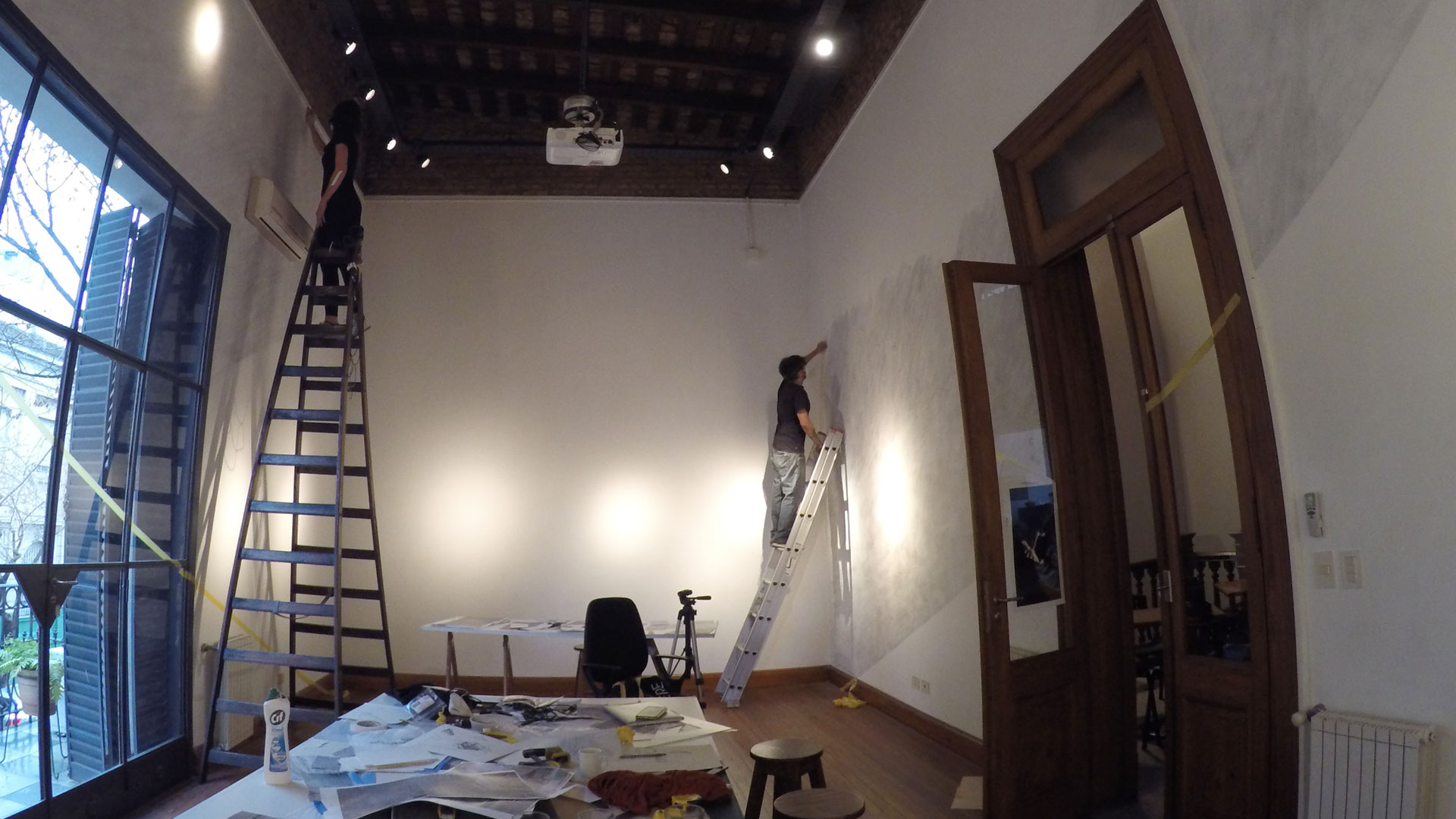
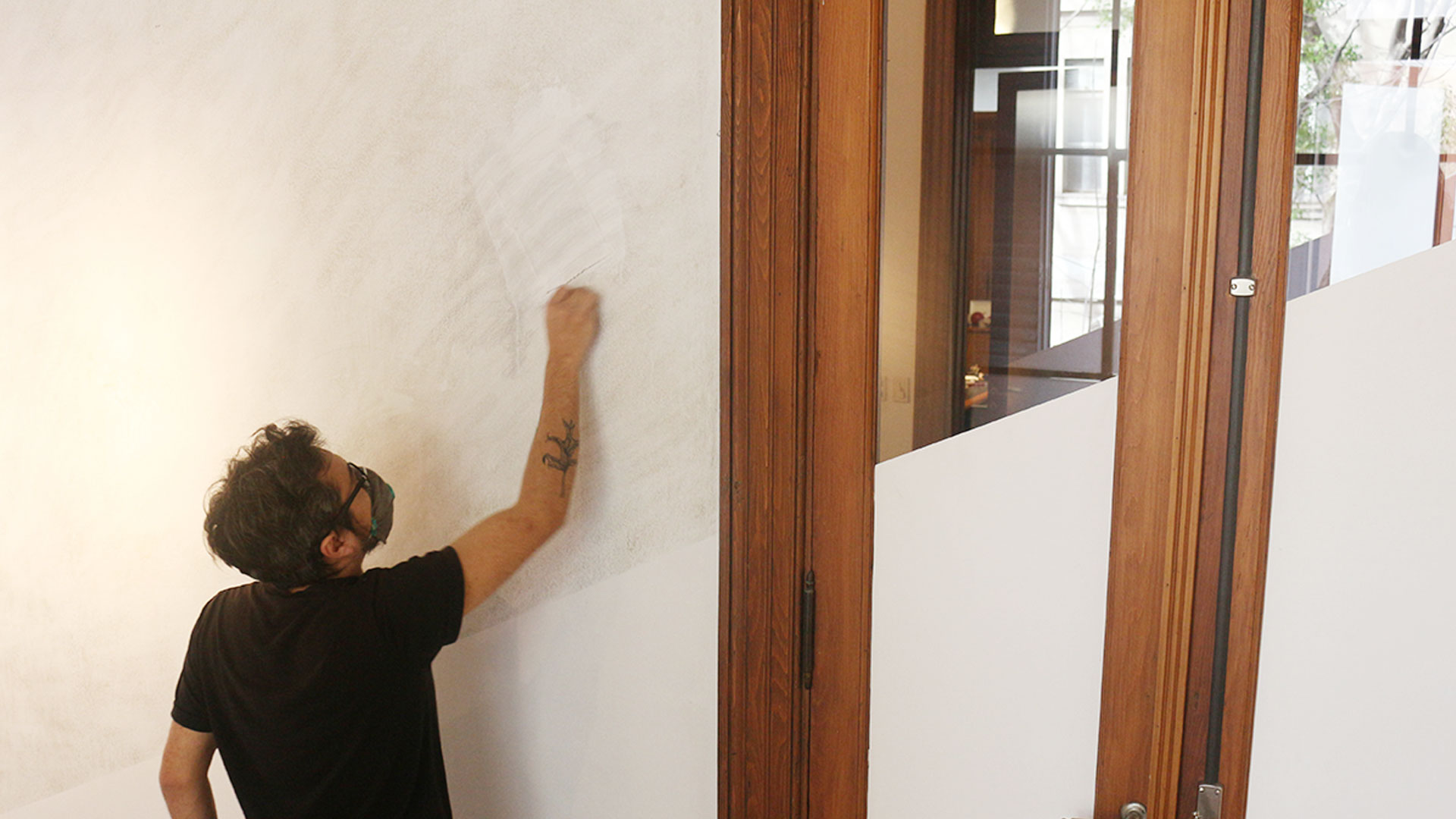
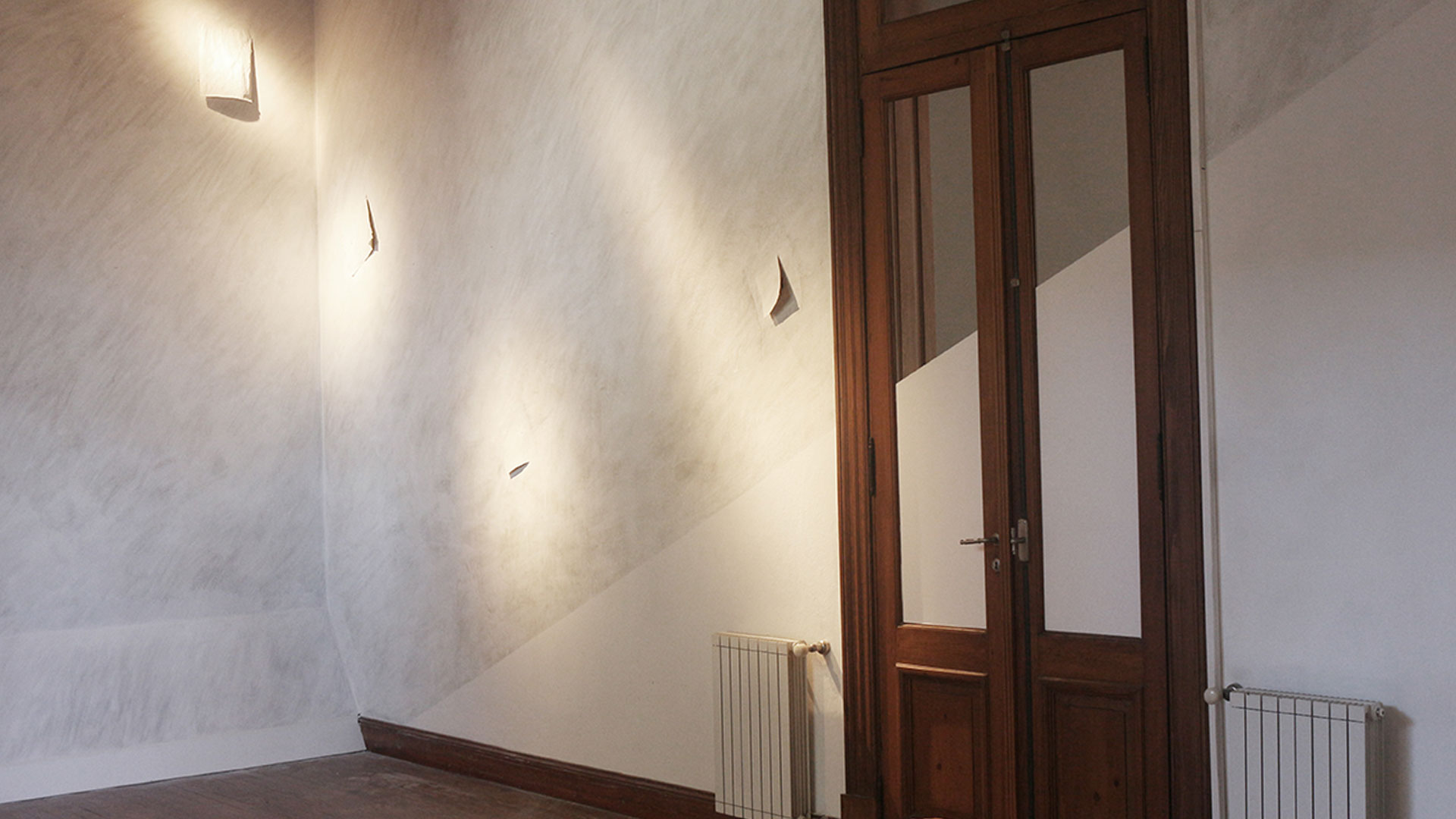
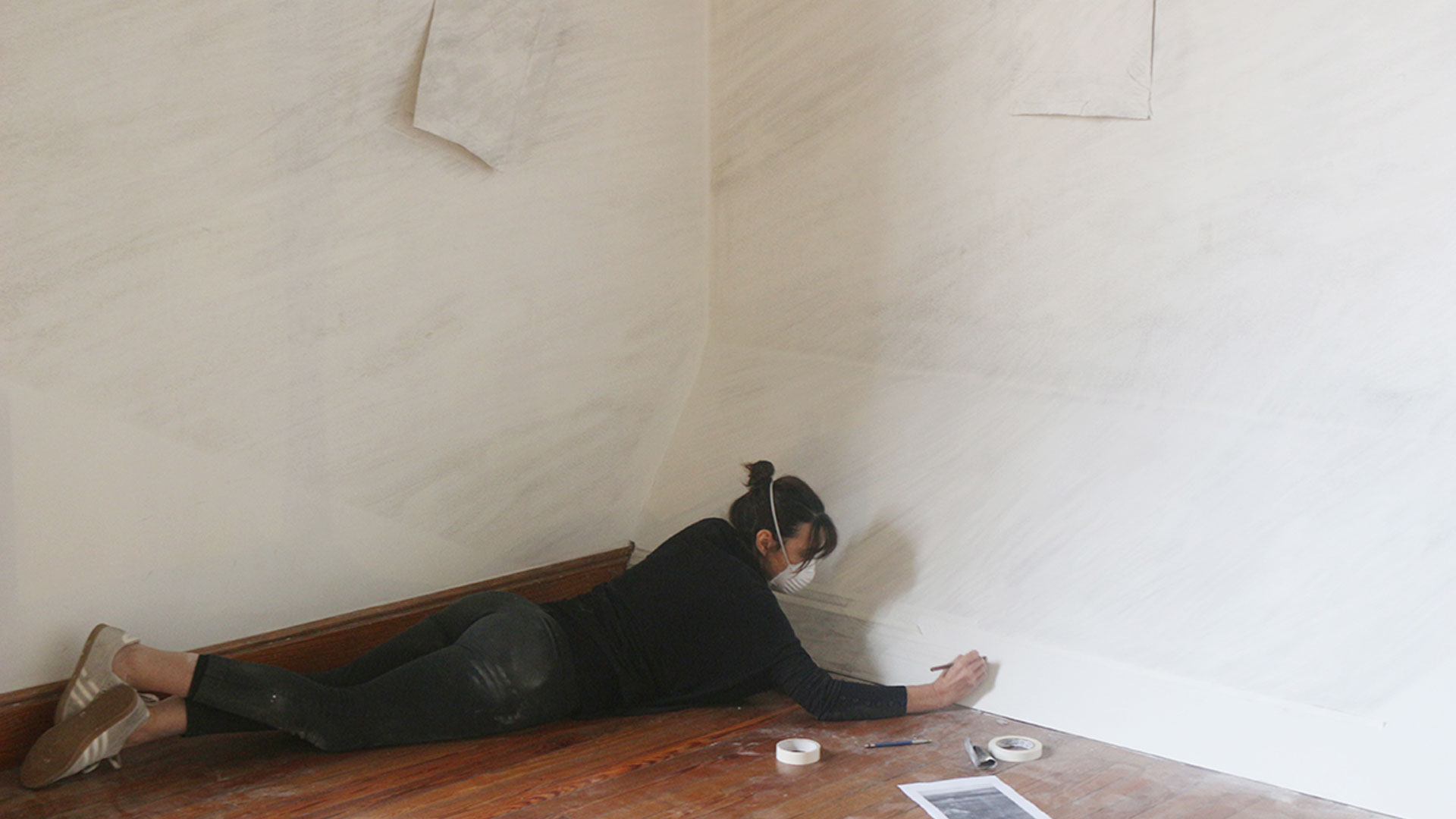
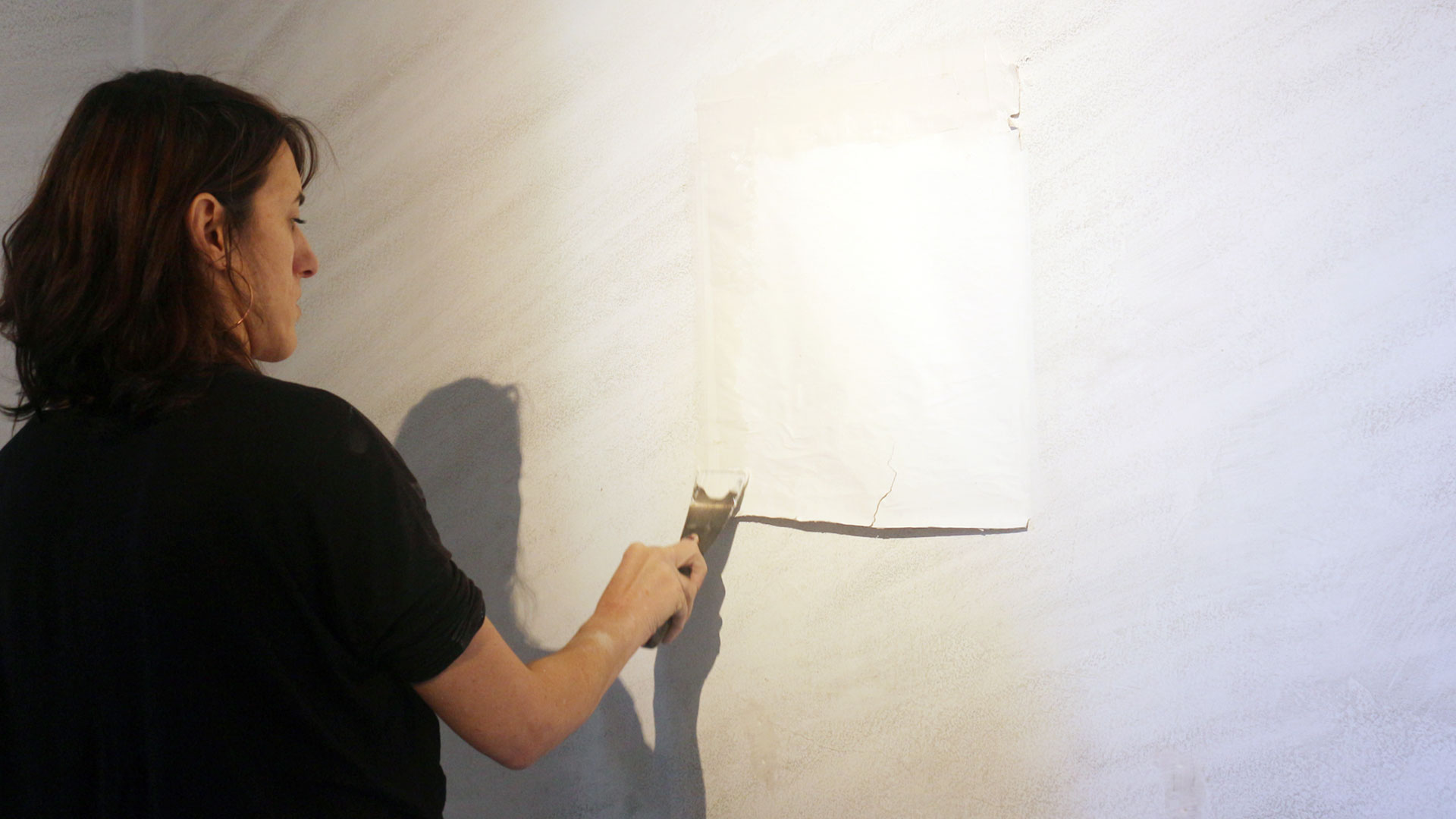
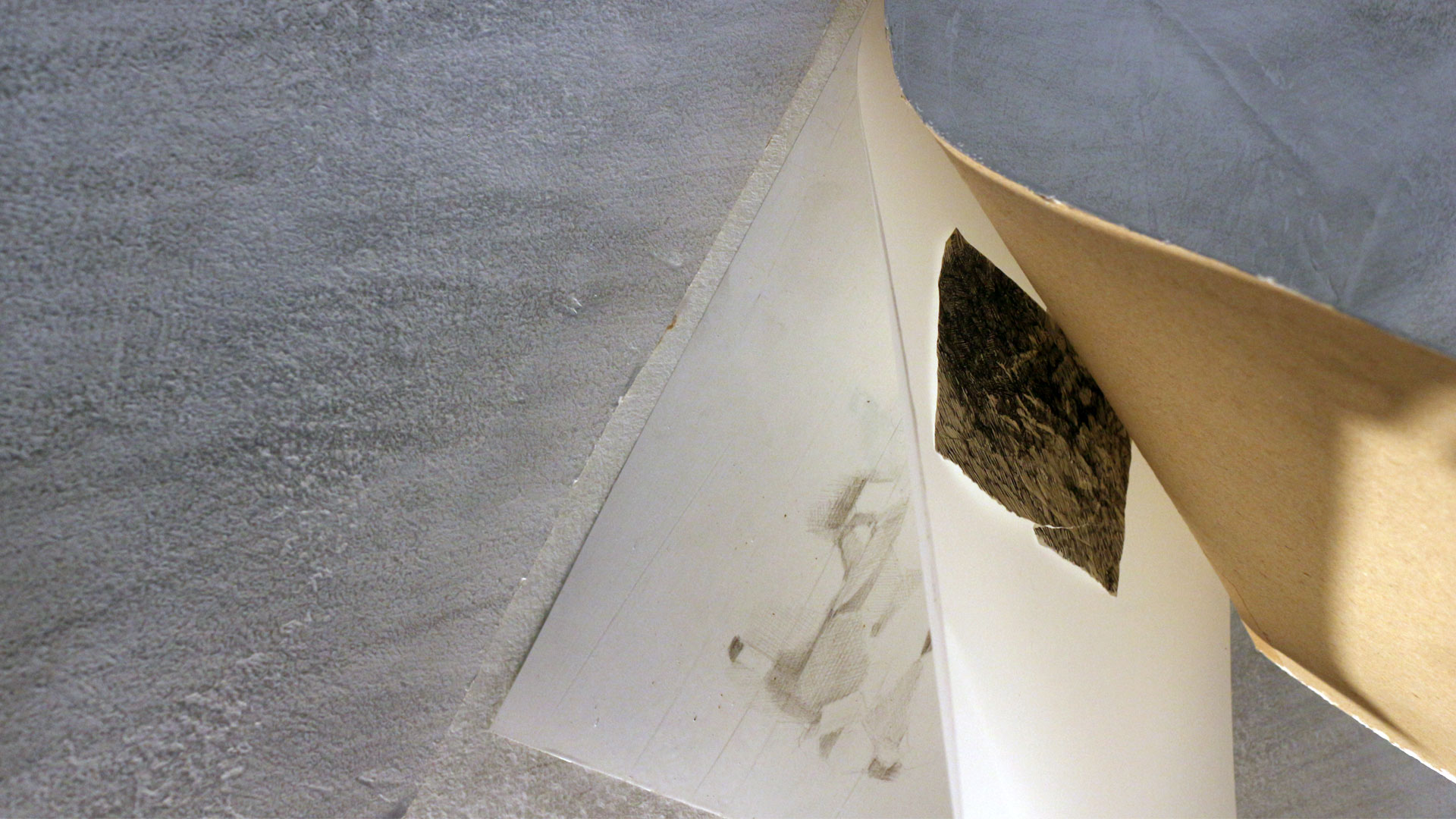

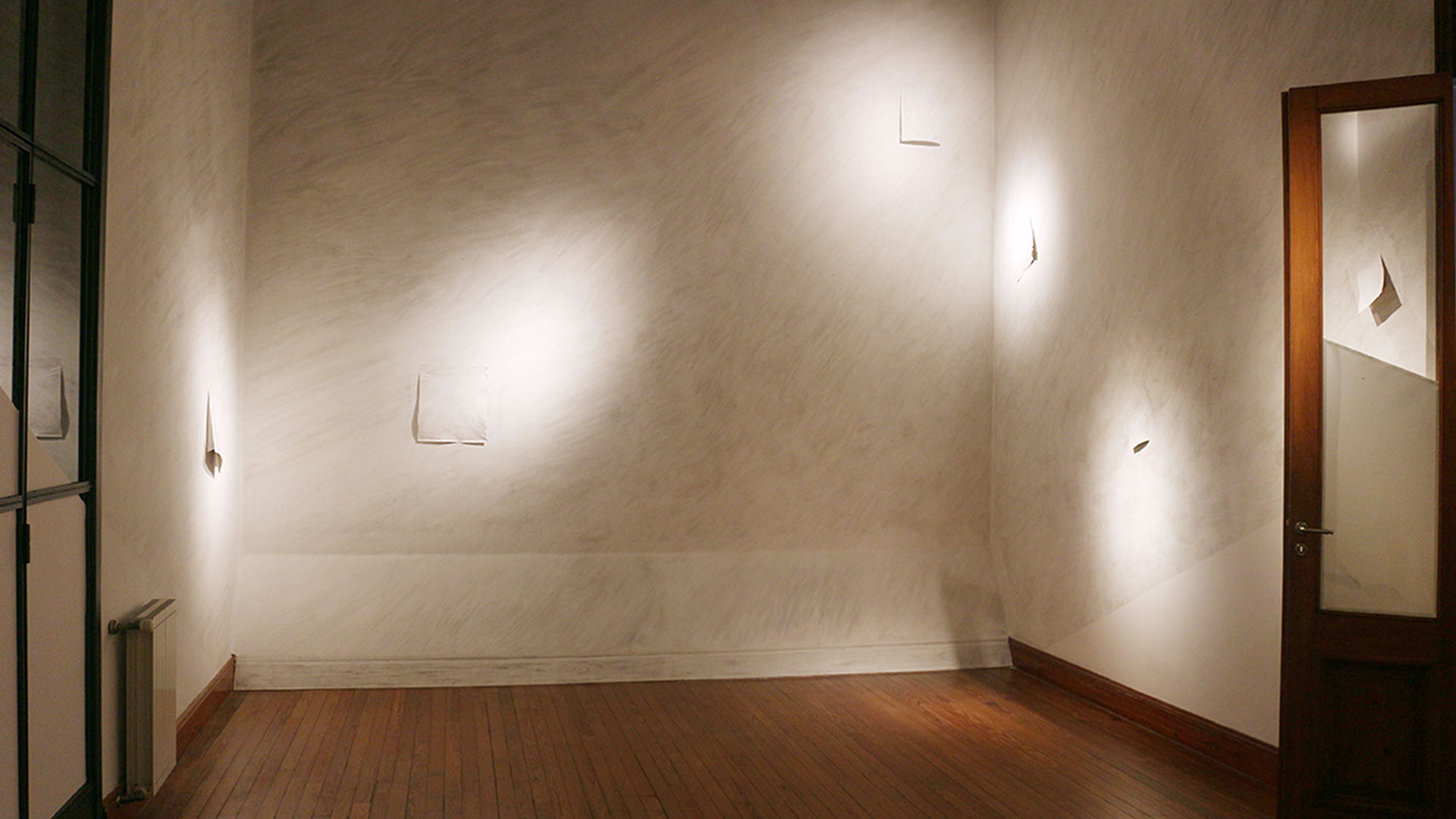
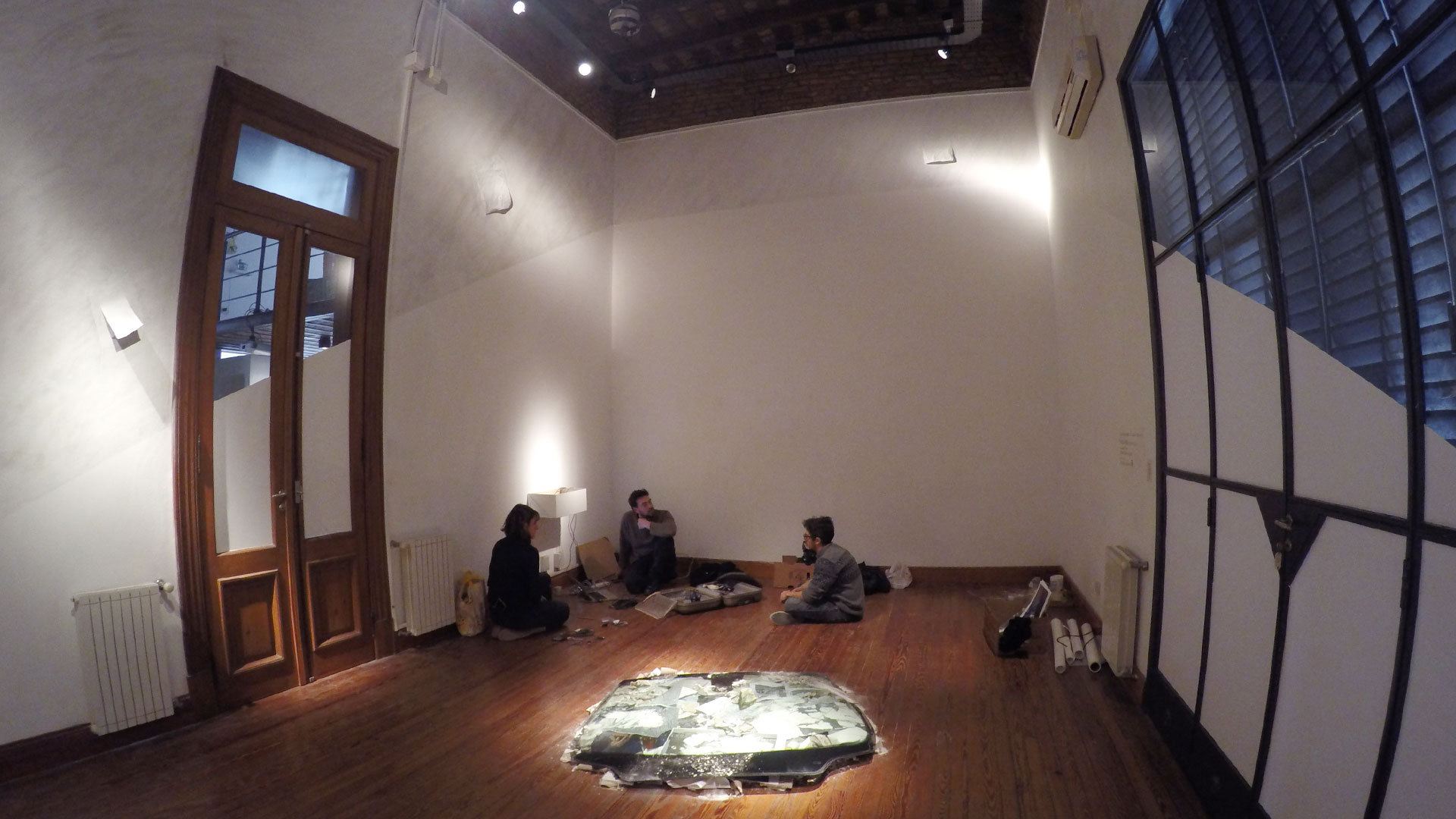

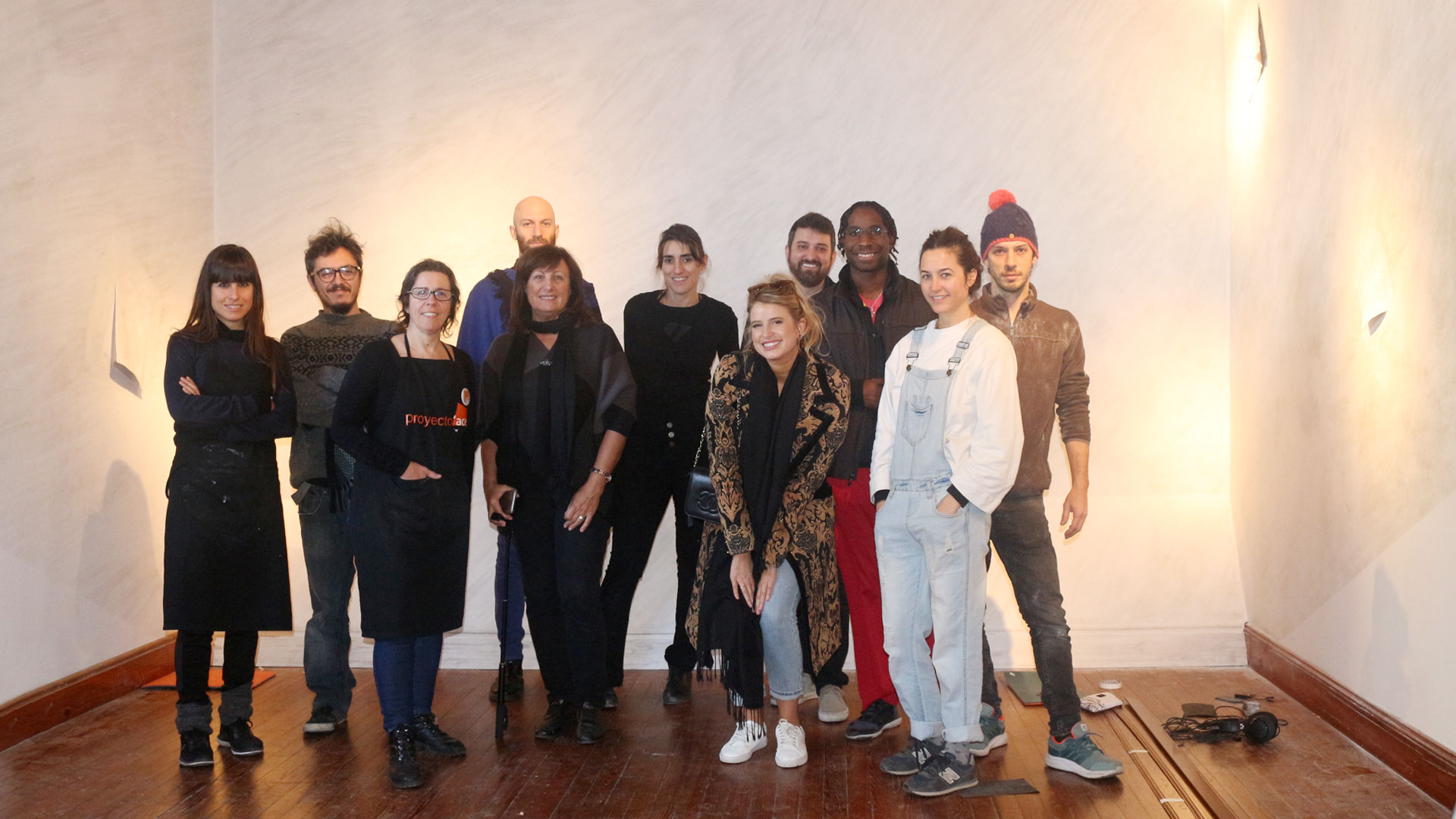
Related Activities
Exhibitions
In Search of the Andes
Artists in Dialogue
03.07.19 11.08.19
In Search for the Andes: Ambiguous Loss and the disappearance of the Mnemonic Landscape
In Search for the Andes is born from the need to go deep in the experience of immigration beside the politics, economics, and social aspects. What is the experience of losing memories and losing also the referents that allow you to connect with the loss? A disembodied loss that disjoints your identity and what you knew to be familiar and stable?
THE PROJECT
This is a project that explores the experience of instability brought by the lack of referent to recall identity. I have been recording interviews with South American immigrants to the US and people that had been relocated due to industrial developments or contamination. The core of these conversations are the vivid attempts to bring back what is lost in memory and the missing pieces that build a complete sense of self. Today, Guillermo Mena and I work, from this failed attempt to retrieve memories, to create inside the exhibition space a new place that resists consumption and points to the emptying of memory. We are working from the exhausting experience of relocation and displacement.
Guillermo Mena and I are working with and from drawing, a language that is familiar to both but made foreign through collaboration. We are using copper to create each mark, pointing to the origin and history of the material in the Andes region, its many economic and political transitions in ownership, its history in relation to urban development and displacement, and the characteristics of the its mark. Copper sits on top of the surface rescuing all its accidents highlighting the memory and history of the walls that now host it. The drawing takes over the gallery space tilting it and pointing to the instability generated by the disruption of memory. The time-consuming process of the metal point refers back to the laboured landscapes of this industrial sites and its complex history. The audio of the exhibition is an accumulation of testimonies, audio of the Andes, and recordings of the making of the piece, a different but reciprocal type of mark in the space.
Familiarity and displacement are the tension that lies at the foundation of this project.
Javier Bustos comes into the project bringing his expertise as musician and sound artist, manipulating audio files and creating new ones. It is in the midst of a creative dialogue that we all attempt to give body to the experience of Mnemonic loss.
Three distinct and unfamiliar voices attempting to create just one sound to represent home.
Related artists
In collaboration with:
Guillermo Mena
Sound intervention:
Javier Bustos
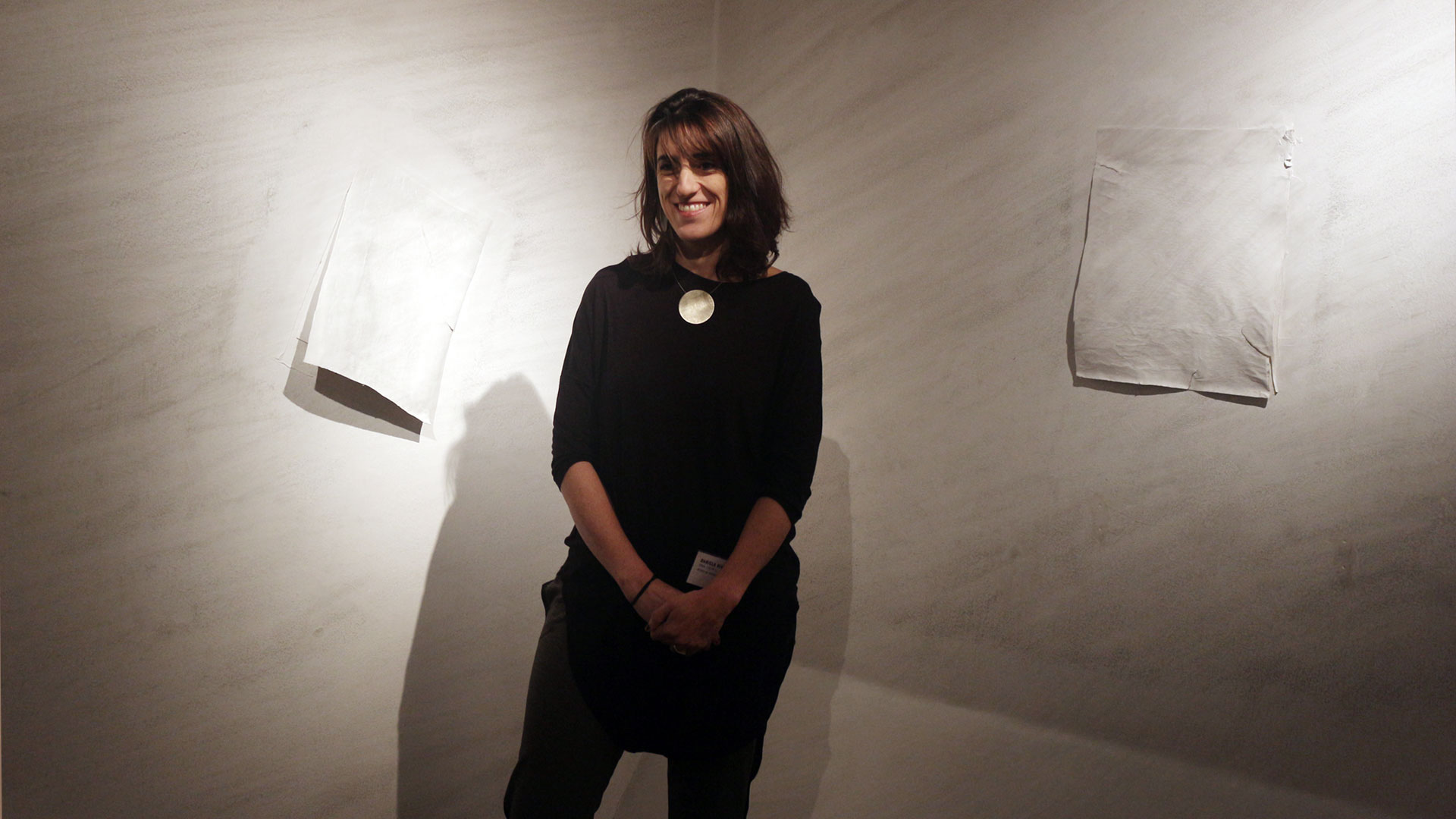
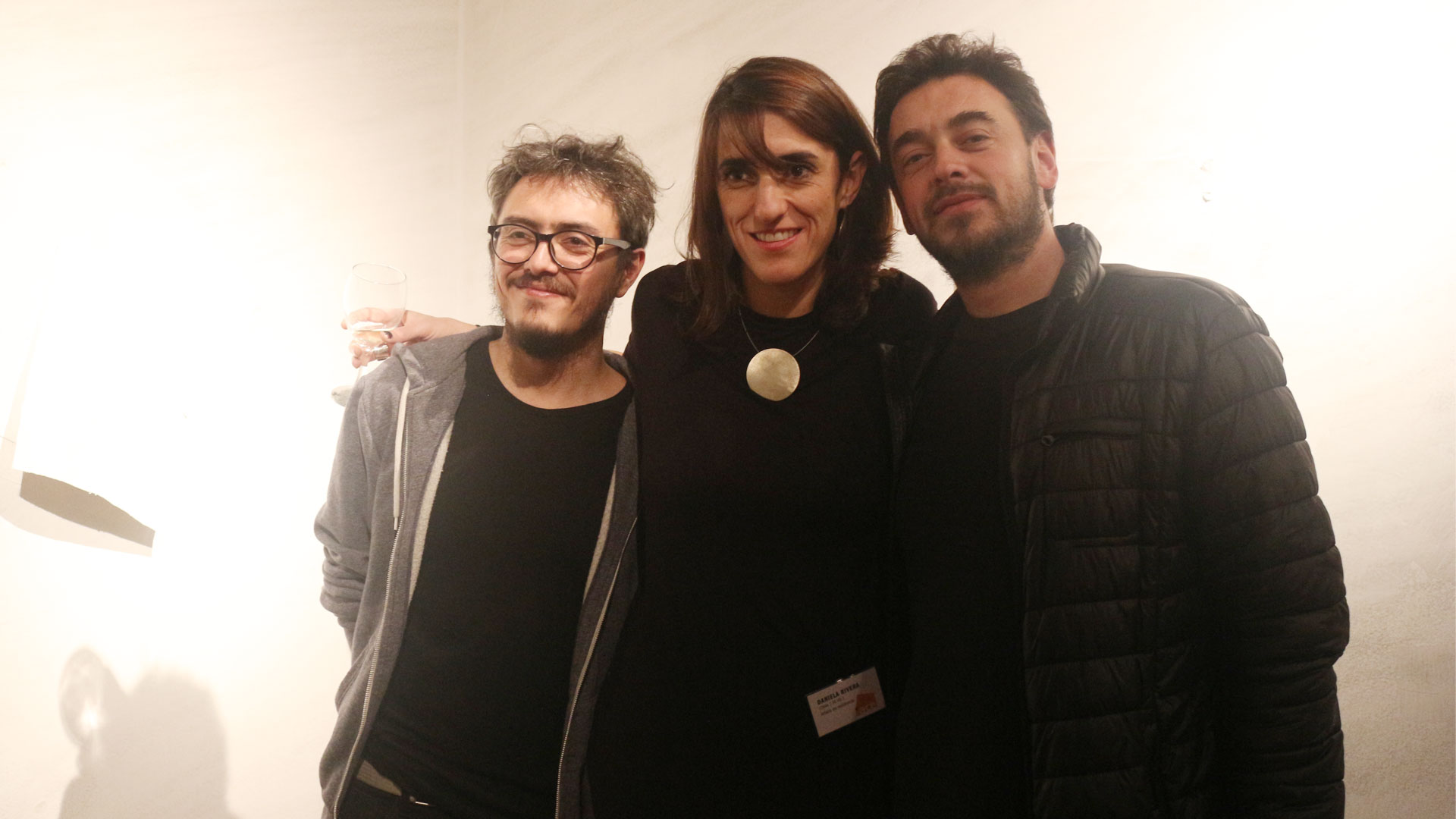
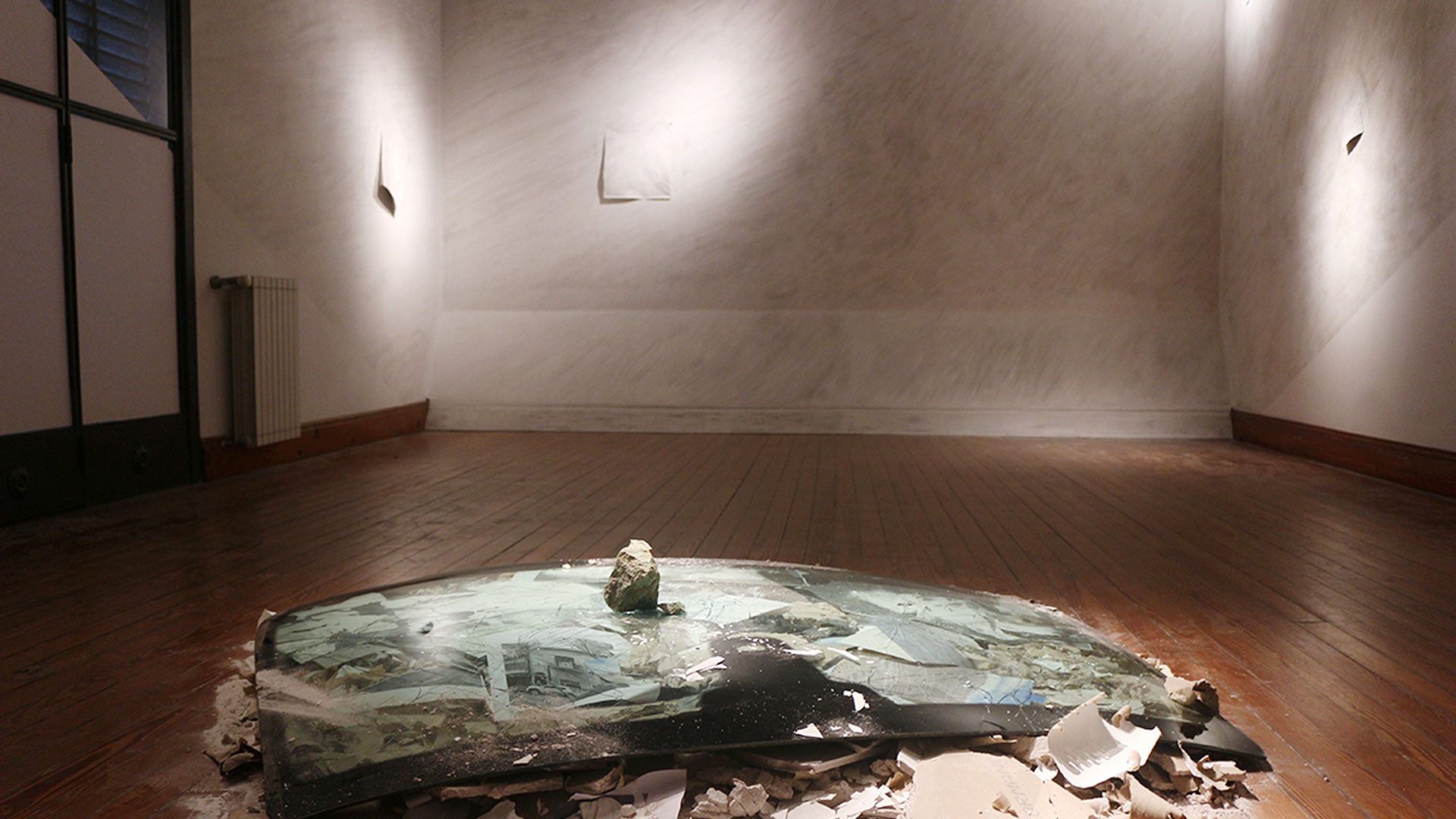
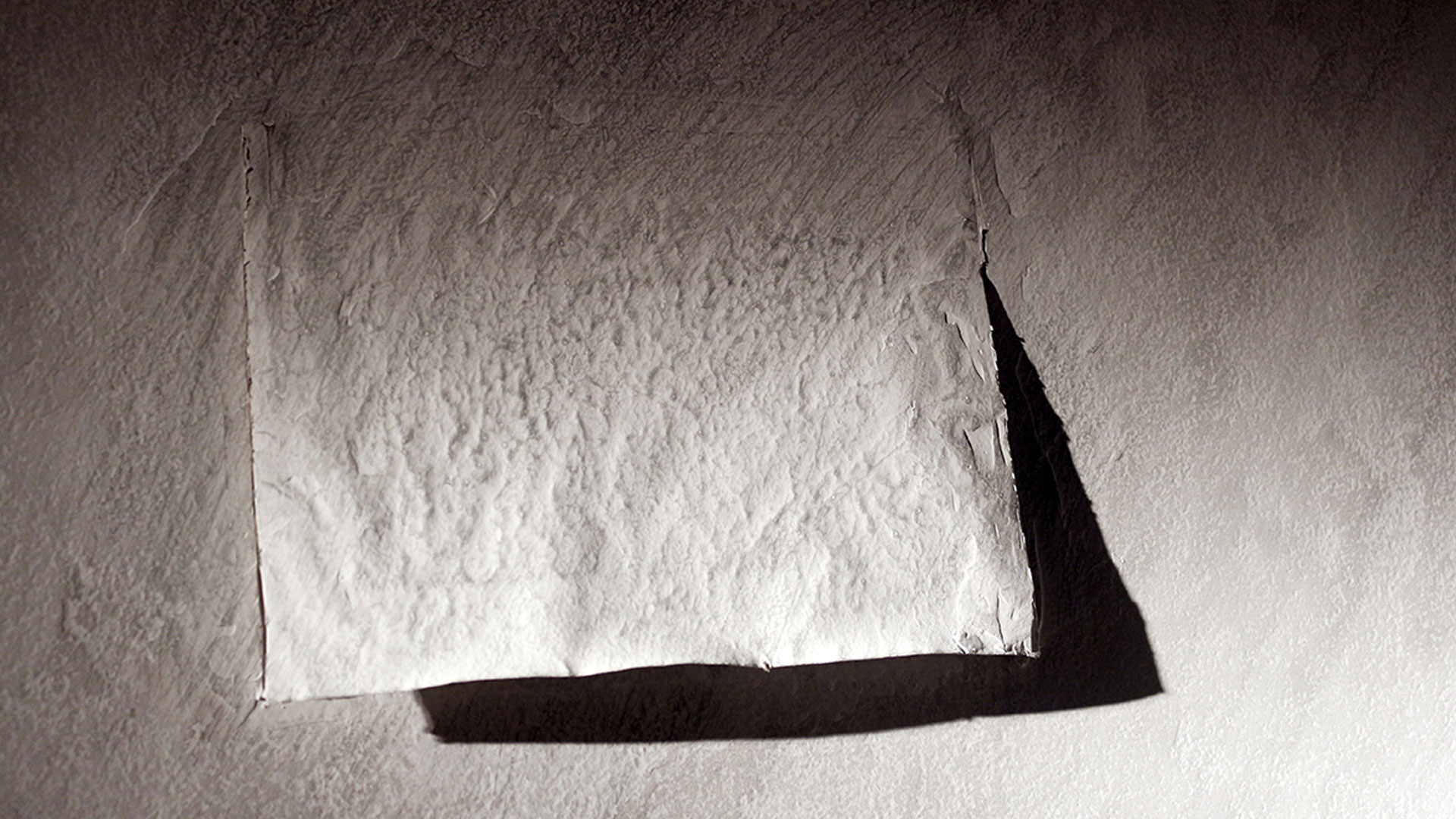
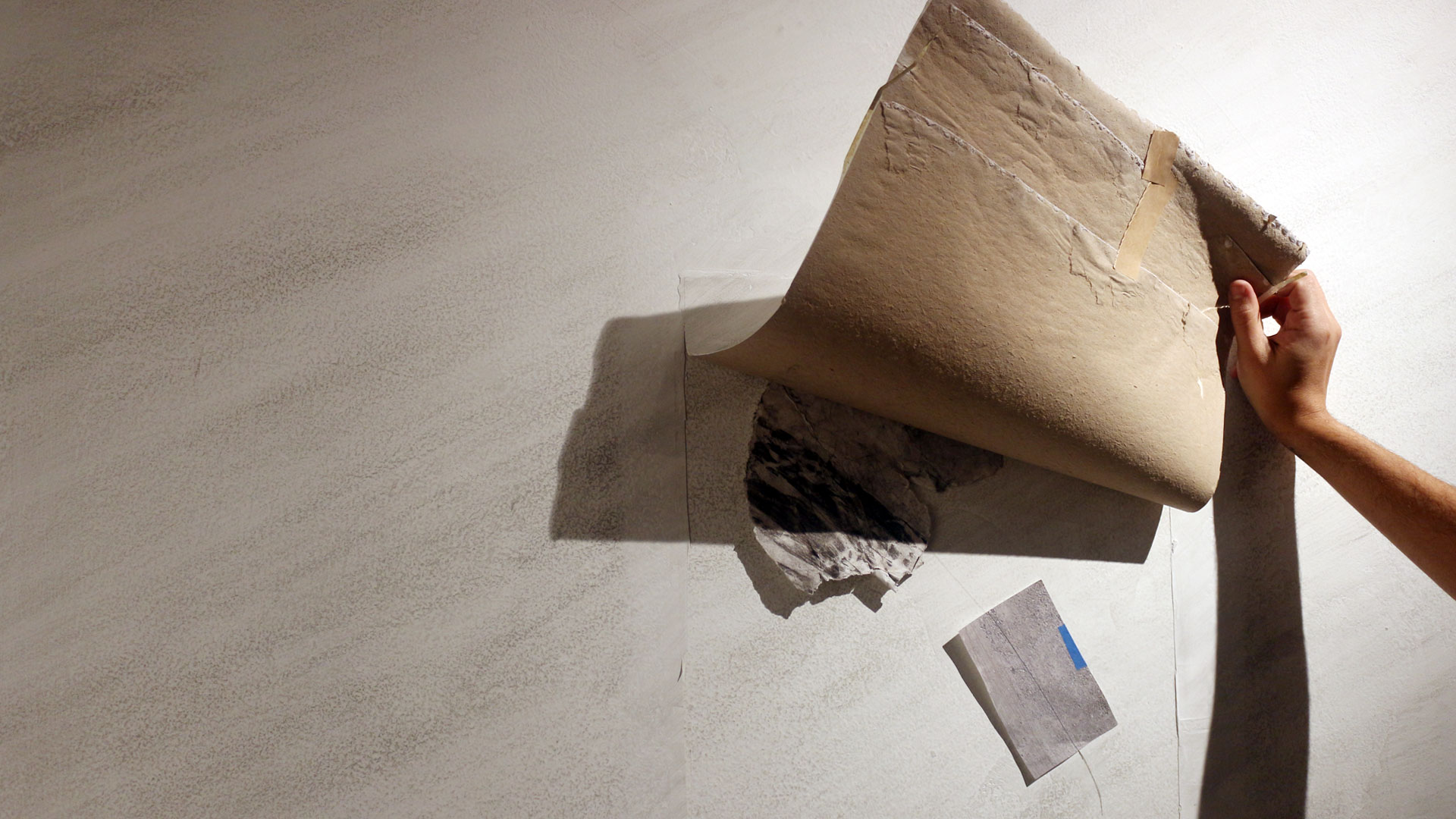
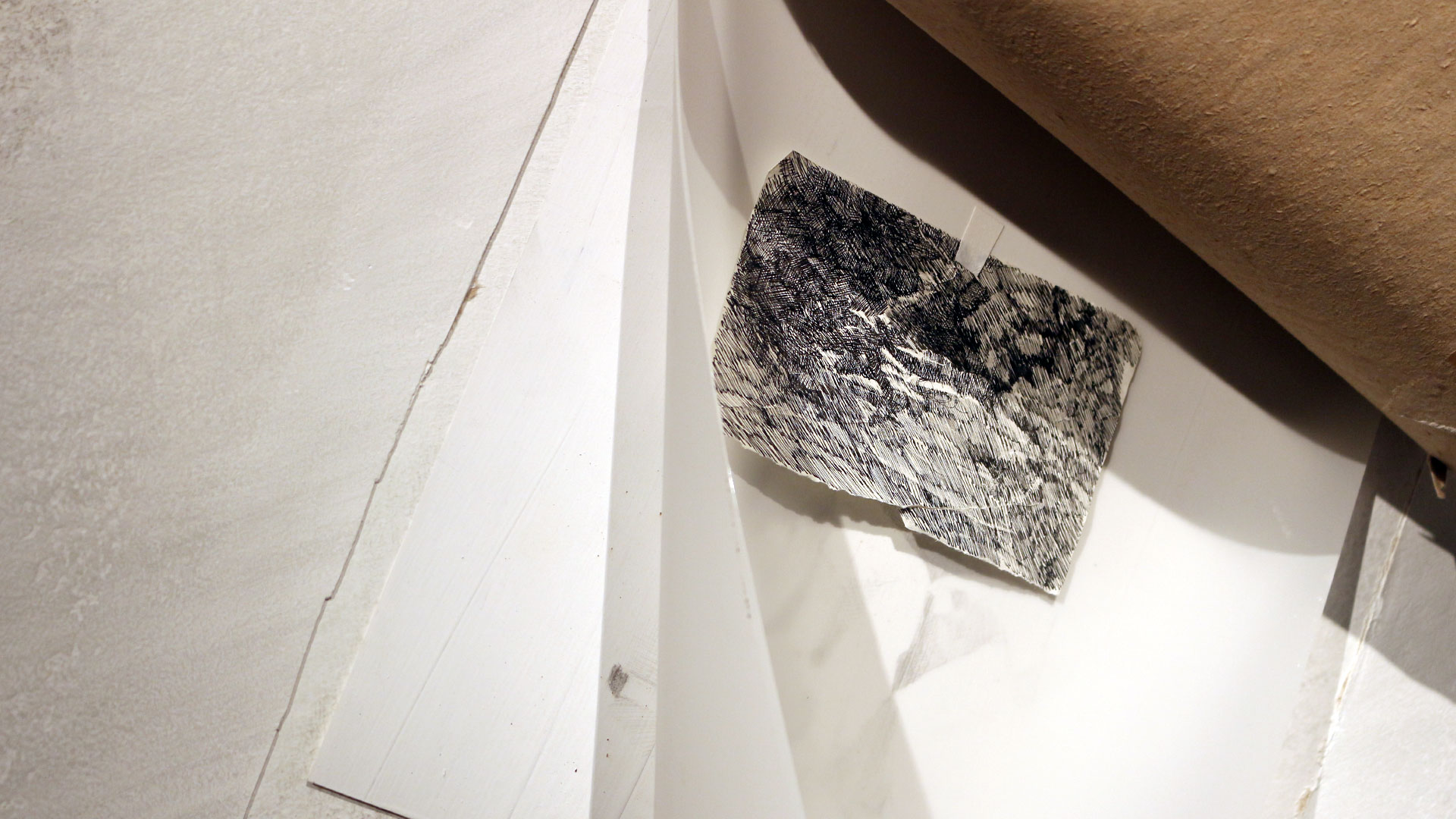
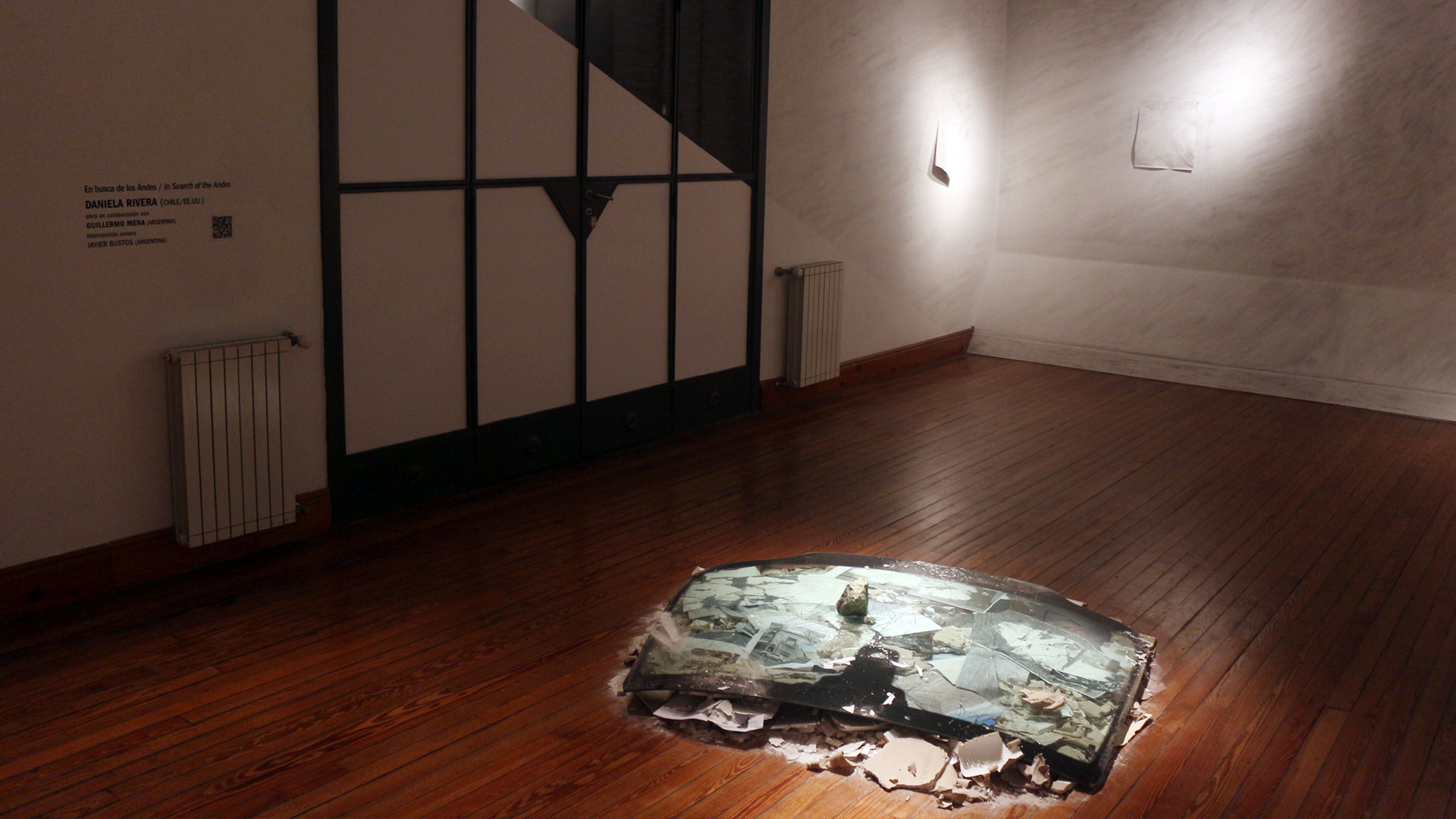
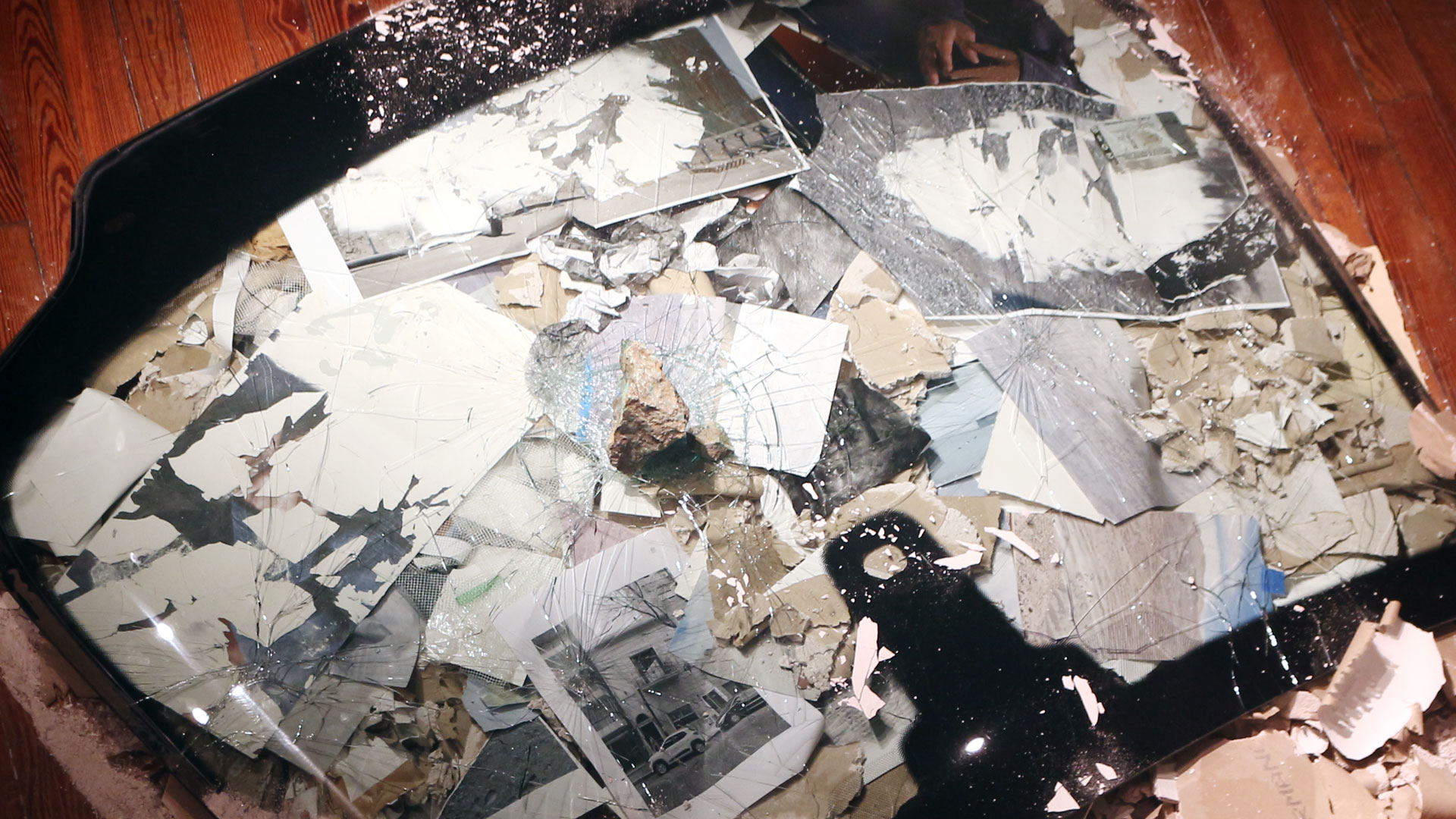
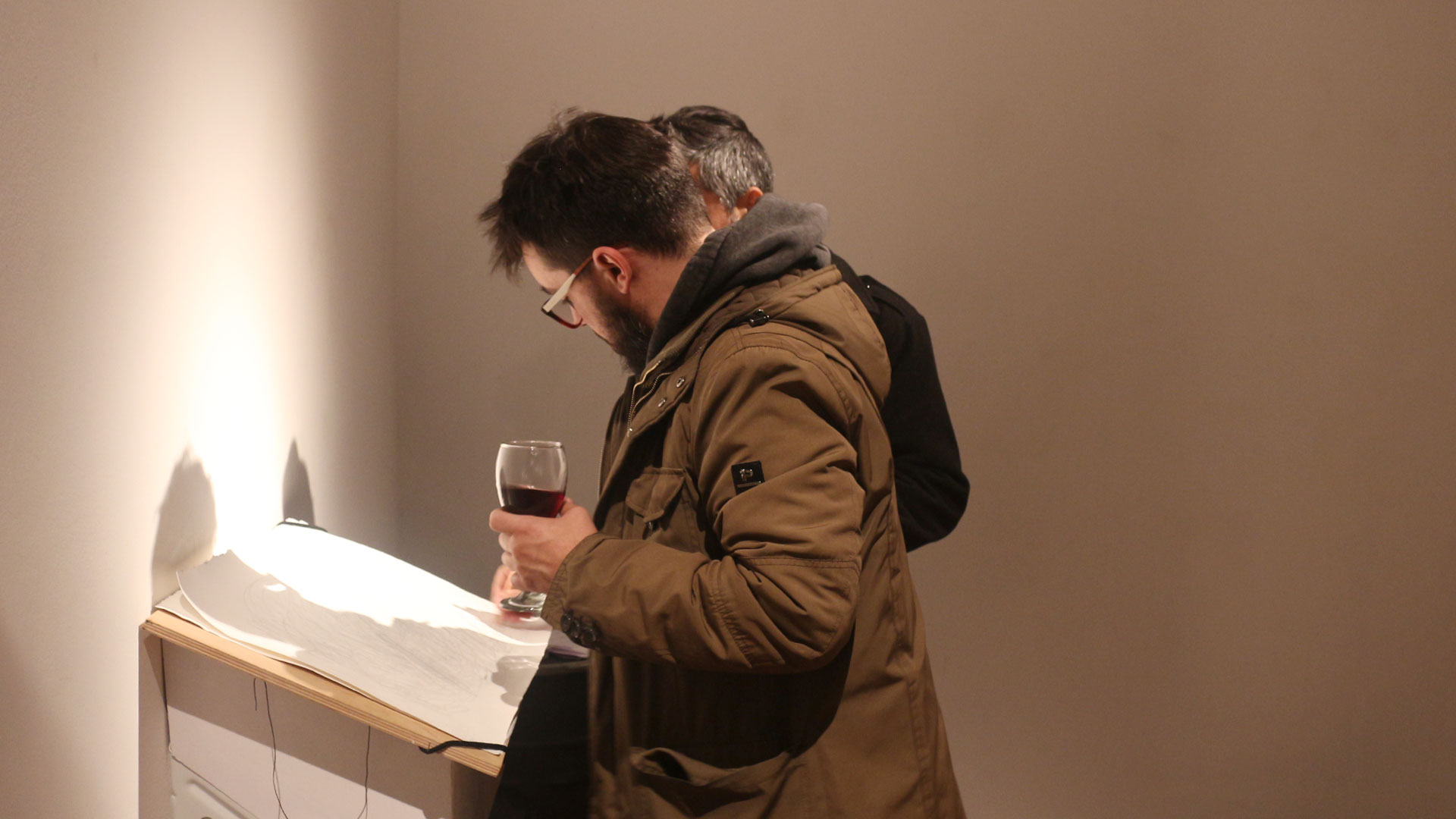
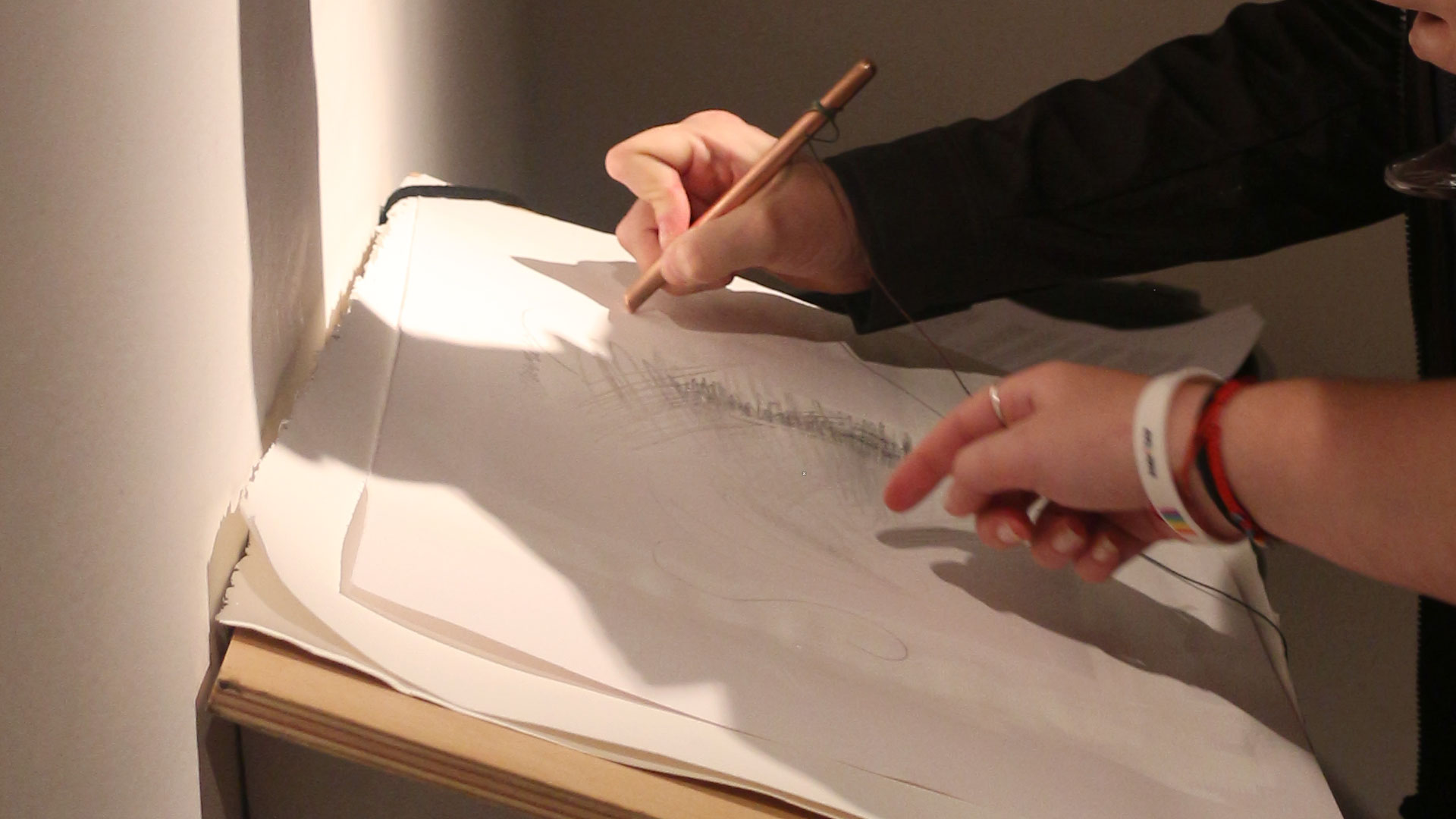
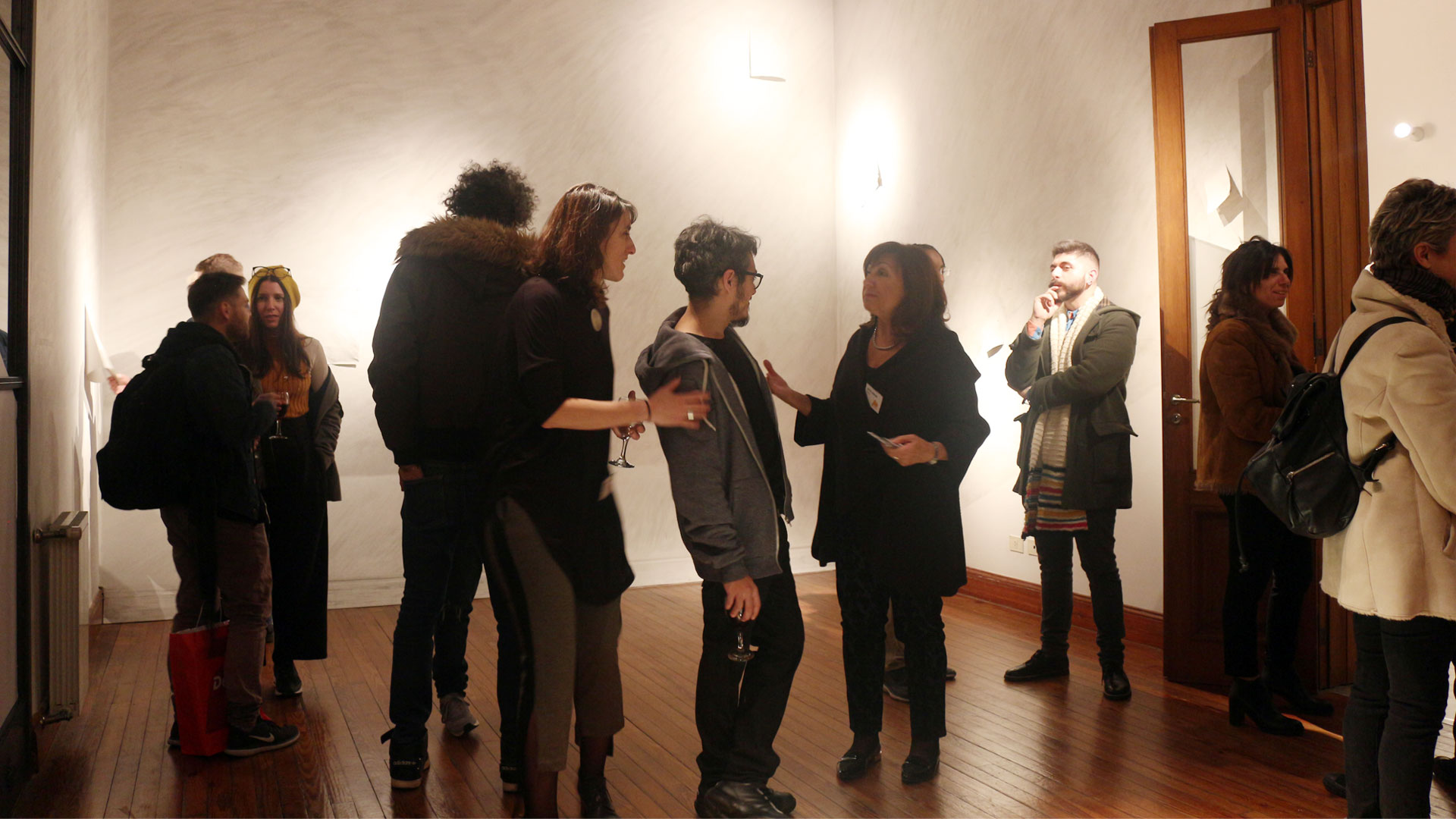
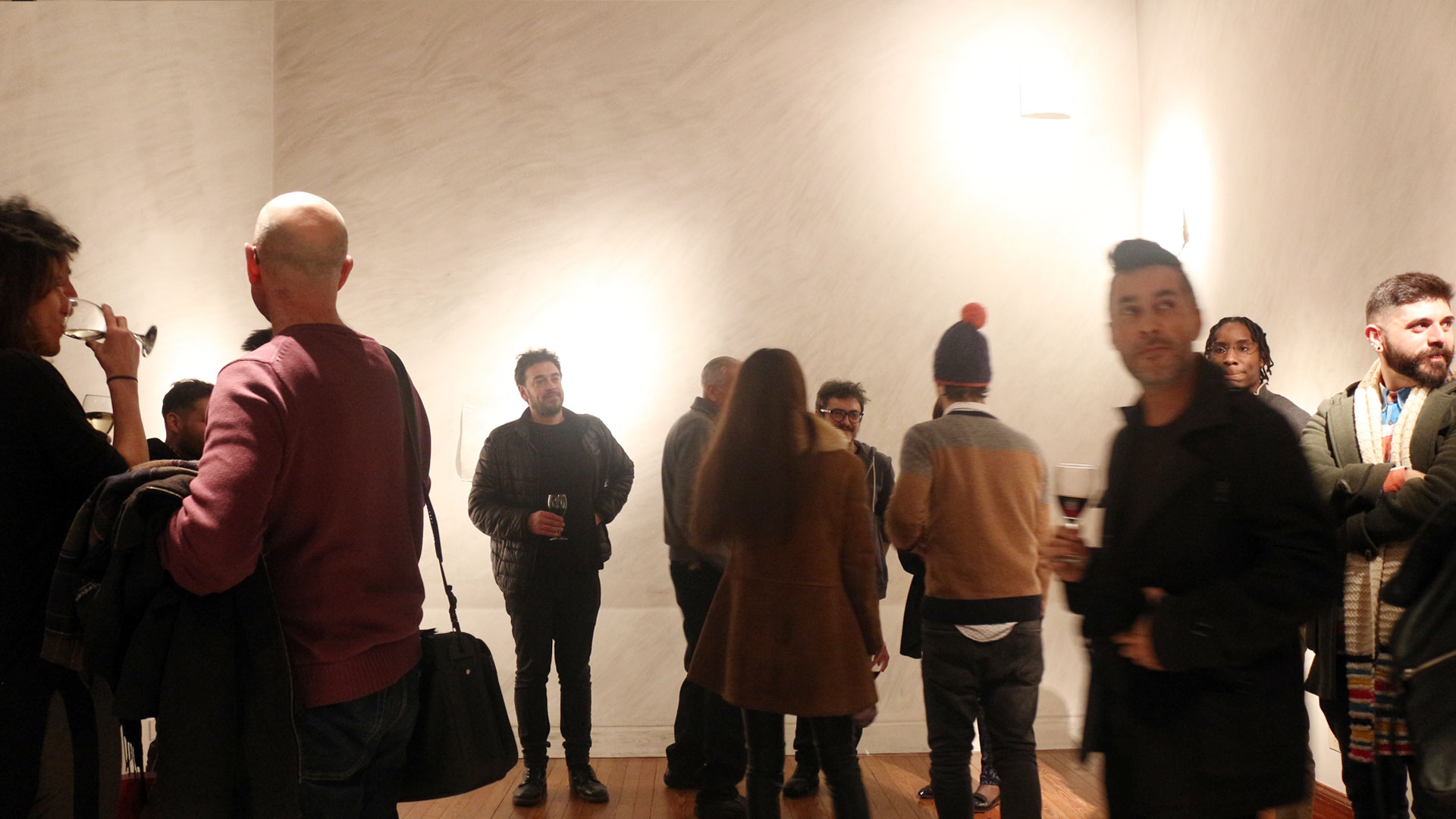
´aceNITE
A Macrocosm
Artists in dialogue
03.07.19
On Wednesday, July 3, we inaugurated the projects of the Production Residences for the months of June-July 2019 by Daniela Rivera (Chile-USA) and Aubrey Vollrath (USA), together with an open studio by Rashid Lane (USA), who shared the results of his Exploration Residency. The works of Daniela and Aubrey coexisted in dialogue with two guest projects: an installation by Constanza Abete (Argentina) and the Micro-Macrocosmos2018 portfolio, organized by the International Graphics Exchange Program (IPEP) of India, with the participation of Argentinean artist Floki Gauvry.
Daniela Rivera’s project, In Search of the Andes was a work in collaboration with Argentinean artists Guillermo Mena and Javier Bustos.
In Search for the Andes is born from the need to go deep in the experience of immigration beside the politics, economics, and social aspects. It is a a project that explores the experience of instability brought by the lack of referent to recall identity. For this work, Daniela, Guillermo and Javier worked together from the attempt to retrieve memories, to create inside the exhibition space a new place that resists consumption and points to the emptying of memory. A job sprouting from the exhausting experience of relocation and displacement.
Aubrey Vollrath’s project sought to explore the eccentricities of the telos of Buenos Aires and its peculiar characteristics: “What makes a good love motel? I am interested in exploring the aesthetics of rooms specifically designed for sex, and the curatorship that they do of the fantasies of an unknown other”.
Rashid Lane opened its research on the local Afro-descendant diaspora to the public of Fundación´ace, which in the near future will trigger a series of triptych paintings that will characterize the narrative of the different cultural origins of people of African descent in Argentina.
The MICRO-MACROCOSMOS exhibition (sponsored in Buenos Aires by Fundación´ace) is a series of international graphic works by artists from India, Argentina, Mexico, USA, Poland, Finland, Russia, Turkey, Pakistan, Taiwan, Australia, Portugal and Nepal, made in 2018 and gathered through IPEP.
Constanza Abete, selected artist within the Semillero 2019 open call, presented White Noise II , an installation that took place in the transversal space of our house. The entire walls of the space were covered by masks in gauze and plaster combined with the reproduction of a recording of white noise.
Related artists
Artists in collaboration
Guillermo Mena
Javier Bustos
Artist SEMILLERO 2019
Constanza Abete
MICRO-MACROCOSMOS 2018
Portfolio organized by the International Graphics Exchange Program (IPEP) of India
Coordinator in Buenos Aires: Floki Gauvry.
